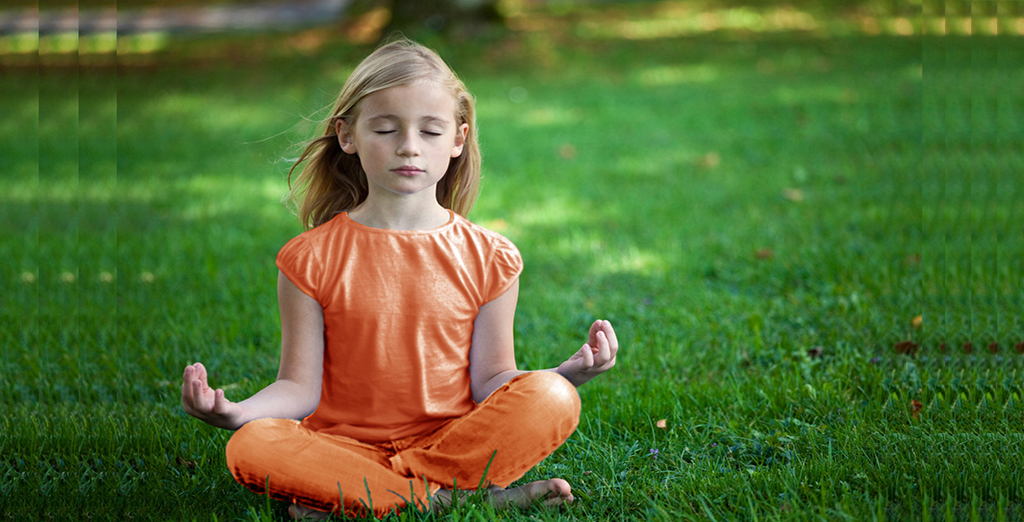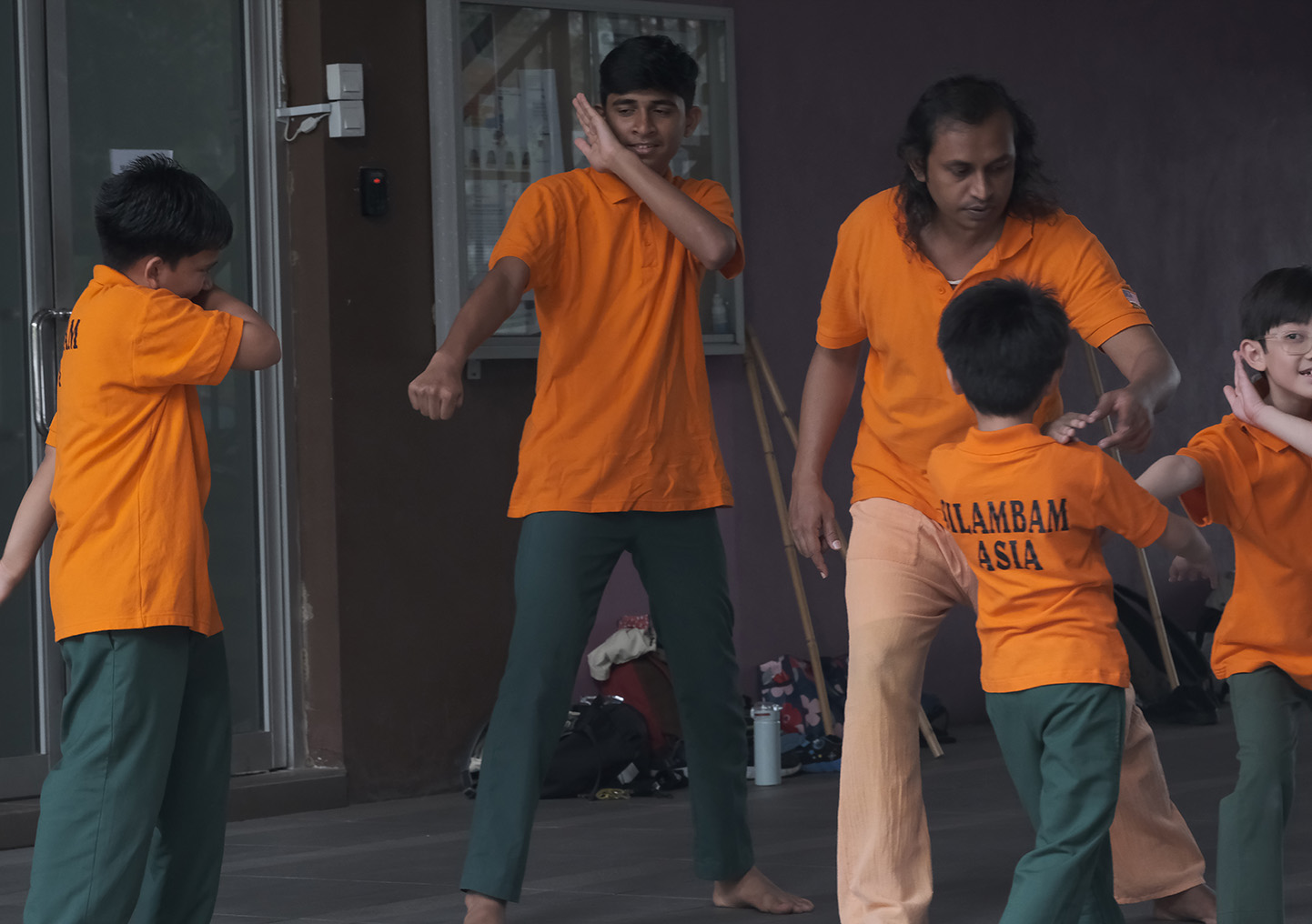
Silambam Mastery
Yoga
Yoga Traditional
Bahasa Melayu : Yoga - Terapi / Malayalam : യോഗ (Yeaga) / Telugu : యోగ (Yoga) / Français : Yoga
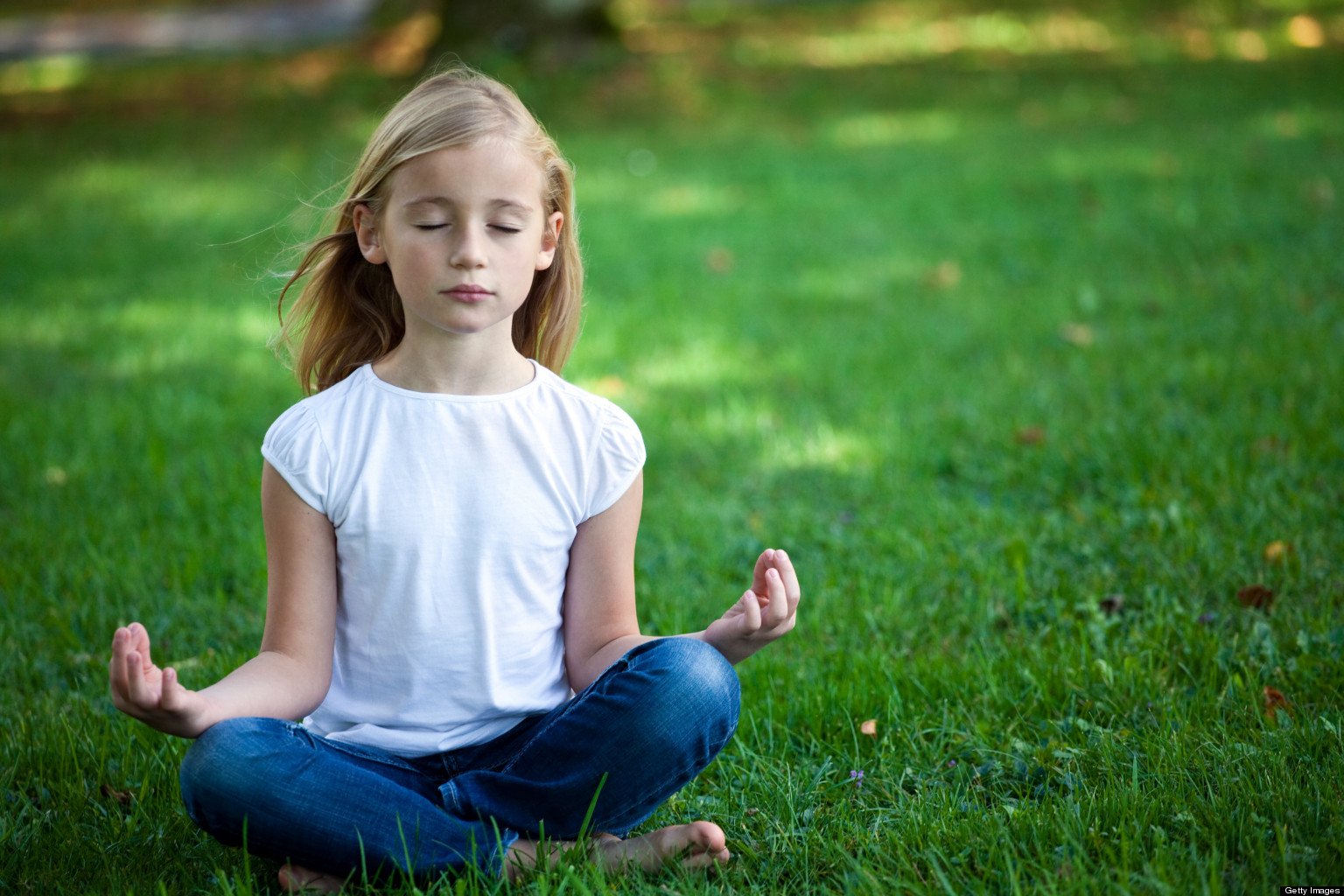 We providing yoga trainings using practical methods and provide deeper knowledge which hidden in traditional ways which originated from Himalaya Mountain, India.
We providing yoga trainings using practical methods and provide deeper knowledge which hidden in traditional ways which originated from Himalaya Mountain, India.
Several information not published in our website for safety of training and to preserve the quality of practical trainings.
Below are basic or general information about yoga:
Yoga (Common Trainings)
Yoga (Common Trainings)
Published: 22 November 2014
Last Updated: 15 May 2025 04:30 AM (GMT+8)
(1) Surya Namaskara (Sun Life Force; also known as: Sun Vital Force appreciation; or in other word as: 'Sun Salutation')
(2) Hatha Yoga
Benefits of asanas:
- Control emotions
- Improve power of concentration
- Rid the body of excess fat
- Enhance physical fitness
- Relieve chronic ailments such as constipation, rheumatism, stomach complaints
- Stimulate circulation
- Stabilise thyroid functions
- Keep muscles youthful and supple into old age
- Ethical and moral principles
- Body – prana (life energy) – mind
- From control over the body to control over the mind and meditation
Asanas |
Meanings |
|---|---|
| Adho Mukha Svanasana | Down Dog |
| Akarnadhanurasana | Archer Pose |
| Ardha Chandrasana | Half Moon Pose |
| Ardha Matsyendrasana | Seated spinal Twist Pose / Half Fish Lord Pose |
| Ardha Pavanmuktasana | Half Gas Release Pose |
| Ashwa Sanchalanasana | Equestrian Pose |
| Baddha Konasana | Butterfly |
| Baddha-Padmasana | Bound Lotus Pose |
| Bhadrasana | Gracious Pose |
| Balasana / Shashakasana | Child's Pose |
| Brahmamudra | - |
| Bujangasana | Cobra Pose |
| Chakrasana | Wheel Pose |
| Chaturanga Dandasana | - |
| Dandasana | Staff Pose |
| Dhanurasana | Bow Pose |
| Ekpadaskandhasna | Foot Behind the Head Pose |
| Garbhasana | Womb Pose |
| Garudasana | Eagle Pose |
| Gowmukhasana | Cow Face Pose |
| Halasana | Plow Pose |
| Hanumansana | Splits |
| Janu Sirsasana | Head to Knee Pose |
| Janu Shirasana | Nose to Knee Pose |
| Kandhrasana | Shoulder Pose |
| Kapotasana | Pigeon Pose |
| Karna Pidasana | Knee to Ear / Deaf man pose |
| Kukkutasana | Rooster Pose |
| Marjariasana | Cat / Cow Pose |
| Makarasana | Crocodile Poses (4 Variations) |
| Mandukasana | Frog Pose |
| Matsyasana | Fish Pose |
| Mayurasana | Peacock |
| Natarajasana | Shiva Dancing Pose |
| Navkasana / Naukasana | Boat Pose |
| Padahastasana | Hands to Feet Pose |
| Padmasana | Lotus Pose |
| Padma-Bakasana | Lotus Crane Pose |
| Paschimottanasana | Seated Forward Bend |
| Parivrtta Trikonasana | Revolved Triangle / Reverse Triangle Pose |
| Parsvottanasana | Intense Side Stretch |
| Parshvava Chakrasana | Sidebending Pose |
| Prasarita Padottanasana | Standing Wide Legged Forward Bend |
| Parvatasana | Mountain Pose |
| Pavanmuktasana | Gas Release Pose |
| Poorna Matsyendrasana | Full Fish Lord Pose |
| Raja Kapotasana | Royal Pidgeon |
| Salabhasana | Locust Pose |
| Sankatasana | Contracted Pose |
| Shava Udarakarshanasana | Universal Spinal Twist |
| Sarvangasana | Shoulder stand |
| Setu Bandhasana | Bridge Pose |
| Setu Bandha Sarvangasana | Bridge Pose |
| Siddhasana | Accomplished Pose |
| Sirsasana | Head Stand Pose |
| Sirsa Padangushthasan | Head to Big Toe Pose |
| Sukhasana | Easy pose |
| Siddhasana | Accomplished pose |
| Simhasana | Lion Pose |
| Supta Hasta Pada Angushthasana | - |
| Supta Baddha Konasana | Reclined Butterfly |
| Supta Mandukasana | Sleeping Frog Pose |
| Supta Vajrasana | Sleeping Thunderbolt Pose |
| Svastikasana | Auspicious / Prosperous Pose |
| Savasana | Corpse Pose |
| Tadasana A & B | Mountain Pose / Palm Tree Pose A & B |
| Tolangulasana | Scale Pose |
| Trikonasana | Triangle Pose |
| Ugrasana | Ferocious Pose |
| Urdhva Dhanurasana | Wheel Pose |
| Ustrasana | Camel Pose |
| Uttanasana | Forward Fold |
| Uttanpadasana | Raising Feet Pose |
| Uttan Mandukasana | Raising Frog Pose |
| Uttana Kurmasana | Raising Tortoise Pose |
| Utkatasana | Chair pose |
| Utthita Trikonasana | Triangle |
| Utthita Parsvottanasana | Extended side angle pose |
| Upavistha Konasana | - |
| Vadha Gomukhasana | Bound Cow Face Pose |
| Vajrasana | Strong / Thunderbolt Pose |
| Vakrasana | Twisting Pose |
| Vasisthasana | Side Plank |
| Vatayanasana | Horse Pose |
| Viparita Karani | Legs up the Wall Pose |
| Viprit Naukasana | Inverted Boat Pose |
| Virabhadrasana I | Warrior 1 |
| Virabhadrasana II | Warrior 2 |
| Virabhadrasana III | Warrior 3 |
| Virasana | Hero Pose |
| Vrksasana | Tree Pose |
| Yoga Mudra | Yoga Mudra |
(3) Ashtanga Vinyasa Yoga (Primary Series)
Asanas |
Meanings |
|---|---|
| Samasthiti (same state) | return to the basic standing position |
| Warm-Up Poses | - |
| Surya namaskara A | Sun salutation A |
| Surya namaskara B | Sun salutation B |
| - | == Standing Poses == |
| Padangusthasana | Padangustha=big toe Asana=pose |
| Padahastasana | Pada=foot,leg Hasta=hand Asana=pose |
| Uttihita Trikonasana | Uttihita=extended,stretched Tri=three Kona=angle Asana=pose |
| Parivrtta Trikonasana | Parivrtta=revolved, turned round Tri=three Kona=angle Asana=pose |
| Uttihita Parsvakonasana | Uttihita=extended, stretched Parsva=side, flank Kona=angle Asana=pose |
| Parivrtta Parsvakonasana | parivrtta=revolved, turned round parsva=side, flank kona=angle Asana=pose |
| Prasarita Padottanasana A | Prasarita=expanded, spread out, extended Pada=foot, leg Tan=stretch Asana=pose |
| Prasarita Padottanasana B | Prasarita=expanded, spread out, extended Pada=foot, leg Tan=stretch Asana=pose |
| Prasarita Padottanasana C | Prasarita=expanded, spread out, extended Pada=foot, leg Tan=stretch Asana=pose |
| Prasarita Padottanasana D | Prasarita=expanded, spread out, extended Pada=foot, leg Tan=stretch Asana=pose |
| Parsvottanasana | Parsva=side, flank Tan=stretch Asana=pose |
| Utthita Hasta Padangustasana | Uttihita=extended, stretched Hasta=hand Padangusta=big toe Asana=pose |
| Ardha Baddha Padmottanasana | Ardha=half Baddha=bound, restrained Padma=lotus Ut=intense Tan=stretch Asana=pose |
| Utkatasana | Utkata=powerful, fierce Asana=pose |
| Virabhadrasasana I | Virabhadra=the name of a hero who led Siva's army Asana=pose |
| Virabhadrasasana II | Virabhadra=the name of a hero who led Siva's army Asana=pose |
| - | == Seated Poses == |
| Dandasasana | Danda=a staff, a rod Asana=pose |
| Paschimottanasana A | Paschima=west [refers to the back of the body] Ut=intense Tan=stretch Asana=pose |
| Paschimottanasana B | Paschima=west [refers to the back of the body] Ut=intense Tan=stretch Asana=pose |
| Paschimottanasana C | Paschima=west [refers to the back of the body] Ut=intense Tan=stretch Asana=pose |
| Purvottanasana | Purva=east [refers to the front of the body] Ut=intense Tan=stretch Asana=pose |
| Ardha Baddha Padma Paschimottanasana | Ardha=half Baddha=bound, restrained Padma=lotus Paschima=west [refers to the back of the body] Ut=intense Tan=stretch Asana=pose |
| Triang Mukhaikapada Paschimottanasana | Tri=three Anga=body, limb, part of the body Mukha=face Eka=one Pada=foot, leg Paschima=west [refers to the back of the body] Ut=intense Tan=stretch Asana=pose |
| Janu Sirsasana A | Janu=knee Sirsa=head Asana=pose |
| Janu Sirsasana B | Janu=knee Sirsa=head Asana=pose |
| Janu Sirsasana C | Janu=knee Sirsa=head Asana=pose |
| Marichyasana A | Marichi=the name of a sage, the son of Brahma (the creator) Asana=pose |
| Marichyasana B | Marichi=the name of a sage, the son of Brahma (the creator) Asana=pose |
| Marichyasana C | Marichi=the name of a sage, the son of Brahma (the creator) Asana=pose |
| Marichyasana D | Marichi=the name of a sage, the son of Brahma (the creator) Asana=pose |
| Navasana | Nava=boat Asana=pose |
| Bhujapidasana A | Bhuja=arm, shoulder Pida=pain, discomfort, pressure Asana=pose |
| Bhujapidasana B | Bhuja=arm, shoulder Pida=pain, discomfort, pressure Asana=pose |
| Kurmasana | Kurma=tortoise Asana=pose |
| Supta Kurmasana | Supta=sleeping, lying down Kurma=tortoise Asana=pose |
| Garbaha Pindasana | Garbha=womb Pinda=embryo Asana=pose |
| Kukkutasana | Kukkuta=cock, rooster Asana=pose |
| Baddha Konasana | Baddha=bound, restrained Kona=angle Asana=pose |
| Upavistha Konasana A | Upavistha=seated Kona=angle Asana=pose |
| Upavistha Konasana B | Upavistha=seated Kona=angle Asana=pose |
| Supta Konasana | Supta=sleeping, lying down Kona=angle Asana=pose |
| Supta Padagusthasana | Supta=sleeping, lying down Padangusta=big toe Asana=pose |
| Ubhaya Padagusthasana | Ubhaya=both Padangusta=big toe Asana=pose |
| Urdhva Mukha Paschimottanasana | Urdhva=upwards Mukha=face Paschima=west [refers to the back of the body] Ut=intense Tan=stretch Asana=pose |
| Setu Bandhasana | Setu=bridge Bandha=bondage Asana=pose |
| - | == Finishing Poses == |
| Urdhva Dhanurasana | Urdhva=upwards Dhanu=a bow Asana=pose |
| Paschimottanasana | Paschima=west [refers to the back of the body] Ut=intense Tan=stretch Asana=pose |
| Sarvangasana | Sarva=all, whole, entire, complete Anga=limb, body Asana=pose |
| Halasana | Hala=a plow Asana=pose |
| Karnapidasana | Karna=ear Pida=pain, discomfort, pressure Asana=pose |
| Urdhva Padmasana | Urdhva=upwards Padma=lotus Asana=pose |
| Pindasana | Pinda=embryo Asana=pose |
| Matsyasana | Matsya=fish Asana=pose |
| Uttana Padasana | Ut=intense Tan=stretch Pada=foot, leg Asana=pose |
| Sirsasana | Sirsa=head Asana=pose |
| Baddha Padmasana | Baddha=bound, restrained Padma=lotus Asana=pose |
| Yoga Mudra | Yoga=union, communion Mudra=a fastener, a seal |
| Padmasana | Padma=lotus Asana=pose |
| Tolasana | Tola=a balance (pair of scales) |
| - | == Rest Pose == |
| Savasana | Sava=corpse Asana=pose |
(4) Sivananda Yoga
(5) Iyengar Yoga
(6) Raja Yoga
- In-depth study of the Yoga Sutras from Patanjali
- The mind, its mystery and control
- Detailed study of the eight steps of Raja Yoga
- Ashtanga - the 8 steps of yoga
- Antahkarana - functions of the mind
- Concentration and meditation
(7) Kundalini Yoga
- The Absolute and how it manifests itself in nature
- Macrocosmos & microcosmos
- The 7 Chakras
- The awakening of cosmic energy
(8) Bhakti Yoga & Kirtan (mantra chanting)
- Positive effects on the emotions
- Correct pronunciation and mental attitude
- Learning of classical Sanskrit songs
- The nine types of Bhakti
- The five attitudes of devotion
- Kirtan: chanting of classical Sanskrit mantra
- Indian gods and their cosmic meaning
- Arati and Pujas (traditional Indian rituals)
- Chanting opens the heart and purifies the mind. With daily chanting, you develop a strong feeling of devotion and a very pure vibration. In devotional chanting correct pronunciation, devotional attitude and awareness of meaning are all-important.
(9) Karma Yoga
- Karma yoga is the practice of selfless service and helps to reduce selfishness and egoism and keeps you fit and healthy and gives immeasurable joy
- You will be asked to do various tasks within the Ashram setting including gardening, cooking, cleaning, office work and any other work necessary for the smooth running of the community
- The law of cause and effect
- Samsara – the wheel of birth and death
- Karma Yoga - selfless service: one hour daily in the ashram community
(10) Jnana Yoga
- Basic concepts of Vedanta philosophy
- The 7 Bhoomikas or planes of consciousness
- Space, time, causation
- The 3 bodies
- The 3 levels of the mind
- Conquest of death
(11) Pranayama (breathing techniques)
- Expands capacity of the lungs
- Relaxes the nervous system
- Balances the two hemispheres of the brain
- Purifies the nadis (subtle energy channels)
- Awakens the inner spiritual energy
- Kapalabhati (lung cleansing exercise)
- Anuloma Viloma (alternate nostril breathing)
- Ujjayi, Surya Bheda, Bhastrika, Sitali, Sitkari, Bhramari
- Samanu (mental cleansing of the nadis)
- The three bandhas: Jalandhara, Moola, Uddiyana
- 1. Bhastrika
- a- Deep Breathing
- b- Fast Breathing
- 2. Nadi-Shodhan
- a- Anuloma Viloma
- b- Nadi -Shodhan with retension
- 3. Surya-Bhedhan
- 4. Chandra-Bhedhan
- 5. Ujjayi
- 6. Shitali
- 7. Sitkari
- 8. Bhramari
- 9. Udgita
- 10. Theory of Murccha
- 11. Bahiya
- 12. Aabhyantra
- 13. Stambh
- 14. Bahiya Aabhantar Vishyakshepi
- 15. Theory of Plavini
(12) Yogic Shatkarmas / Kriyaa ( cleansing techniques )
•Tratak, Neti, Kapalabhati, Dhauti, Nauli and Basti: six classical purification exercises for the eyes, nose, air passages, oesophagus and stomach, abdominal organs and large intestine. Explanation and demonstration of the exercises and their effects. Individual instruction
- 1. Neti
- a- Jala Neti
- b- Rubber Neti
- c- Sutra Neti
- 2. Dhauti (Vamana)
- a- Kunjal
- b- Danda Dhauti
- c- Vastra Dhauti / Bastra Dhauti (Cloth)
- d- Vatsara Dhauti
- e- Agnisara
- f- Shankha Prakshalana
- 3. Nauli
- 4. Basti
- a- Jal Basti
- b- Pawan Basti
- 5. Kapalabhati
- a- Kapalabhati 1
- b- Kapalabhati 2
- 6. Trataka
- a- External Trataka
- b- Internal Trataka
(13) Bandhas (Yogic locks)
(14) Meditation
- Guide to meditation
- What is meditation
- Why meditate
- Physical and mental meditation
- 12-step daily practice
- Effects of and experiences in meditation
- Mantra – spiritual energy in sound
- Mantra initiation (if desired)
(15) Basic Ayurveda, yoga nutrition and the yogic diet
- Vegetarianism – for ethical, spiritual and health reasons
- How diet affects the mind
- Proper balance of the main nutrients
- Ayurvedic principles of nutrition
- Healing effects of fasting
1. Panchmahabhoota Theory
2. Tridosha Theory (Proper nutrition according to the three-Dosha theory of Ayurveda)
3. Dhatus in Ayurveda
4. Dhatus as it Relates to Modern Medicine
5. Prakriti Analysis
6. Diet According to Prakriti
7. General Introduction to Diet & subtle aspects of the vegetarian diet
8. Yogic Diet
9. Mindful Eating
10. Pancha Prana
11. Pancha Kosha
(16) Introduction to chakras, nadis & mudras
- Gyana Mudra
- Chin Mudra
- Yoni Mudra
- Bharav Mudra
- Bhairvi Mudra
- Hridaya Mudra
- Vayu Mudra
- Shunya Mudra
- Surya Mudra
- Varun Mudra
- Prithvi Mudra
- Pran Mudra
- Apana Mudra
- Shambhavi Mudra
- Nasikagra Mudra
- Khechari Mudra
- Kaki Mudra
- Viparitkarni Mudra
- Pashinee Mudra
- Yoga Mudra
- Maha Mudra
- Ashvini Mudra
(17) Basic Sanskrit
Yoga Introduction
Yoga Introduction
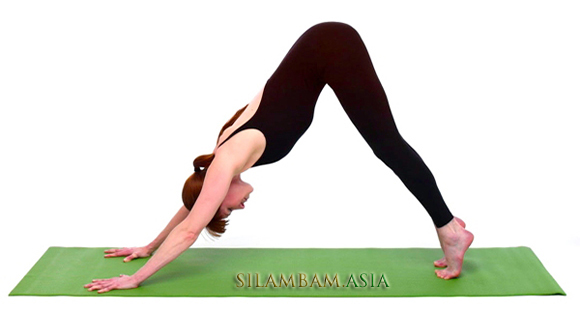
The word 'Yoga' immediately reminds one about the rich ancient culture of India. The word yoga in Sanskrit means "to unite", the amalgamation of body, mind and soul. Meaning yoga is an exercise in moral and mental nurturing that generates good health ( arogya ), contributes to longevity ( chirayu ), and the total process results into positive and persistent happiness and peace. It not only affects the conscious self but the subconscious as well. Many people have lot of misconceptions about yoga, lot of people perceive it to be a dangerous practice, a kind of mental and physical acrobatics that is compatible only to a Hindu mind. But yoga is an all-embracing way of life. It is applicable to all people irrespective of their caste, creed, sex, and religion. A person may start practising at any age and can go on reaping its benefits.
Yoga can improve posture, strengthen and tone muscles, and soothe stress away, which is very much needed for the stress filled life of today. Researchers have learned that, besides relieving problem backs, yoga can provide help for people suffering from serious medical conditions like asthma, multiple sclerosis etc.
Yoga also helps reduce one's odds of heart disease. In a study published in the Journal of Alternative and Complementary Medicine, researchers in Timarpur, India, had 15 Army soldiers adopt a twice-daily yoga routine. The control group did other exercises which included stretches and slow running. After 3 months, the yoga group showed a significant drop in blood pressure; the control group didn't.
It has been quite a challenge to route the youngster to this practice as they are constantly running. They perceive yoga to be something which is passive and meant to be practiced only by the older generation. This bubble has to be broken as there are different types of yoga, which is blooming, like the power yoga, artistic yoga etc.
Yoga - The Origin ( Tamil தமிழ் : யோகாவின் வரலாறு ) |
|---|
Yoga was started by wandering ascetics who sought the solitude of the forests to practice this ancient science and then imparted their knowledge to the other disciples in their ashrams. The reason why this art did not popularize was that the ancient yogins were possessive. The yogic postures and the subsequent stages of yoga were passed down only to some selected students. Hence, this science remained very limited to the forests or remote caves. This lasted till the 1918 until India's oldest technical institute on Yoga, the Institute of Santa Cruz, Mumbai was founded.
Yoga is not only a physical discipline of keeping fit but has a lot to do with the philosophy and the spirituality. In recent times there are 'n' numbers of institutions which have made their name. Each institution follows its own methodology, but following are the most common terms used: Hatha Yoga, Kundalini Yoga, and Astanga Yoga. These give the disciples strength, relaxation and flexibility - the combined benefits one looks for.
Terminology
The word asana in Sanskrit does appear in many contexts denoting a static physical position, although traditional usage is specific to the practice of yoga. Traditional usage defines asana as both singular and plural. In English, plural for asana is defined as asanas. In addition, English usage within the context of yoga practice sometimes specifies yogasana or yoga asana, particularly with regard to the system of the Ashtanga Vinyasa Yoga. That said, yogasana is also the name of a particular posture that is not specifically associated with the Vinyasa system, and that while "ashtanga" ( small 'a' ) refers to the eight limbs of Yoga delineated below, Ashtanga ( capital 'A' ) refers to the specific system of Yoga developed by Sri KrishnamAchãrya at the Mysore Palace.
Yoga first originated in India. In the Yoga Sutra, Patanjali describes asana as the third of the eight limbs of classical, or Raja Yoga. Asanas are the physical movements of yoga practice and, in combination with pranayama or breathing techniques constitute the style of yoga referred to as Hatha Yoga. In the Yoga Sutra, Patanjali describes asana as a "firm, comfortable posture", referring specifically to the seated posture, most basic of all the asanas. He further suggests that meditation is the path to samadhi; transpersonal self-realization.
The eight (8) limbs are, in order:
Yama (restrictions),
Niyamas (observances),
Asanas (postures),
Pranayama (breath work),
Pratyahara (sense withdrawal or non-attachment),
Dharana (concentration),
Dhyana (meditation),
Samadhi (realization of the true Self or Atman, and unity with Brahman - The Hindu Concept of God).
If one wants to practice Yoga seriously they have to go through the following steps one by one :
Yama (restrictions) and Niyama (observances)
The first principle of yoga is daily practice till the ethics become an important part of life. One has to follow the discipline and cleanliness and go through course of training from anuvrata to Mahavrata and subject oneself to a series of lessons in positive and negative principles, the observances ( niyama ) and the restraints ( yama ).
Asana (postures) and Pranayama (breath work)
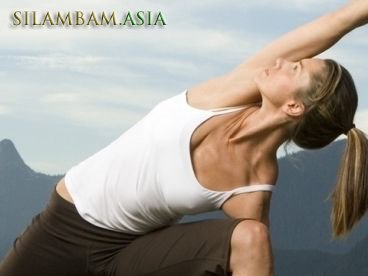
Physical exercises form a part of Hathayoga, which is vital to enable one to keep fit and also to reduce weight, enhance one's beauty internal as well as external. The next part of Hathayoga is again equally important. Pranayama- meaning controlling one's body through breathing. The regular practice of this helps build immunity and also gets rid of various diseases in a natural way without side effects.
Pratyahara (sense withdrawal or non-attachment)
It is a technique of controlling the senses both external ( bahiranga ) and internal ( antaranga ) thereby bridging the space between the body and the mind. The process involves relaxation, centralization, visualization and wariness.
Dharana (concentration) and Dhyana (meditation)
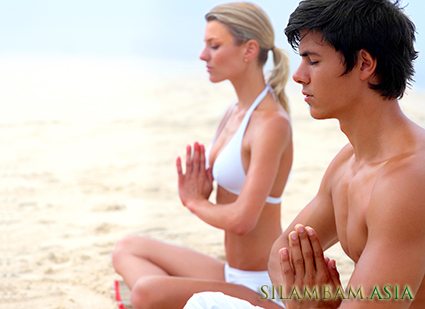
This method starts with concentration and progresses to a constant flow of meditation. It takes you to a transcending world of mesmarization.
Samadhi
This is the final stage of yoga when a person completely gains control over all his senses. He attains a divine position, which is above the worldly desire.
Types of yoga and its benefits ( Tamil தமிழ் : பலன்கள் )
Published: 22 November 2014
Last Updated: 15 May 2025 04:30 AM (GMT+8)
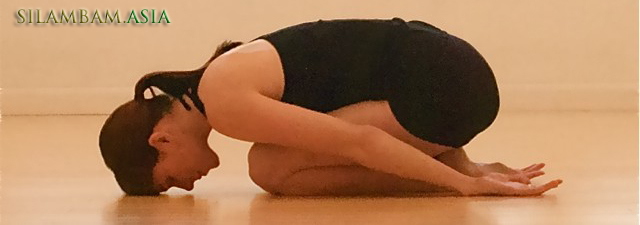
Practicing yoga is very beneficial if practiced regularly and if the right technique of yoga is practiced. The right techniques of yoga that benefits an individual are those techniques that are most useful for a person and those which suit him/her the most.
The following are some of the Mental and Physical Benefits of Yoga.
Mental Benefits of Yoga
- Concentration power increases
- Confidence level is enhanced
- Normal mental health is maintained
- Reduces level of anxiety
Physical Benefits of Yoga
- Increases physical and muscular strength
- Develops resistance to various health disorders
- Youthfulness of body is maintained for a longer period
- Rejuvenates impaired organs
There are many different types of yoga and all of them benefit a different category of people. When you say you do Yoga, you should also be aware of what kind of yoga you are doing, for only then will you be able to figure out the right benefits of all these yoga types and do the one that would suit your needs the best. Here is a list of the biggest types of yoga - the ones you must know about.
- Ananda Marga Yoga
- Ananda Yoga
- Anusara Yoga
- Ashtanga Yoga
- Bhakti Yoga
- Bikram Yoga / Hot Yoga
- Forrest Yoga
- Hatha Yoga
- Isha Yoga
- Iyengar Yoga
- Jivamukti Yoga
- Jnana Yoga
- Kripalu Yoga
- Kriya Yoga
- Kundalini Yoga
- Mantra Yoga
- Power Yoga
- Raja Yoga
- Restorative
- Satyananda Yoga
- Sivananda Yoga
- Swara Yoga
- Viniyoga
- Vinyasa
- Yin
Founded in 1997 by John Friend, Anusara is epitomized by "the celebration of the heart. Expect many "heart-opening" poses like backbends and more talking by the instructor in class. Anusara is often described as Iyengar (a purist form of yoga) with a sense of humor. Created by the aptly named John Friend, Anusara is meant to be heartfelt, and accepting. "Instead of trying to fit everyone into standard cookie-cutter positions, students are guided to express themselves through the poses to their fullest ability," says Rama Patella, a certified Anusara teacher at Yoga Mandali in New York City.
Best For
Mood enhancement via upbeat vibe; practicing when out of shape, because you won't be pushed too far; and learning proper alignment to prevent injuries both on and off the mat.
Who's gotta have it
Nervous newbies. It's nonthreatening and less intense than Ashtanga or Bikram.
Need to know
You may be asked to partner with strangers and clap for your classmates. If that makes you cringe, better to avoid. Anusara also has a definite spiritual side. In class you are frequently asked to "shine your heart" forward into your up dog and offer yourself "to the light," or the goodness inside of you. Just go with it. You do have goodness, right?
Trends and trivia
The fastest-growing yoga du jour, Anusara has amassed over 1,200 teachers worldwide since its birth in 1997. Not to mention, a Deadhead-like following on Friend's cross-country Mystical Merry Band Tours.
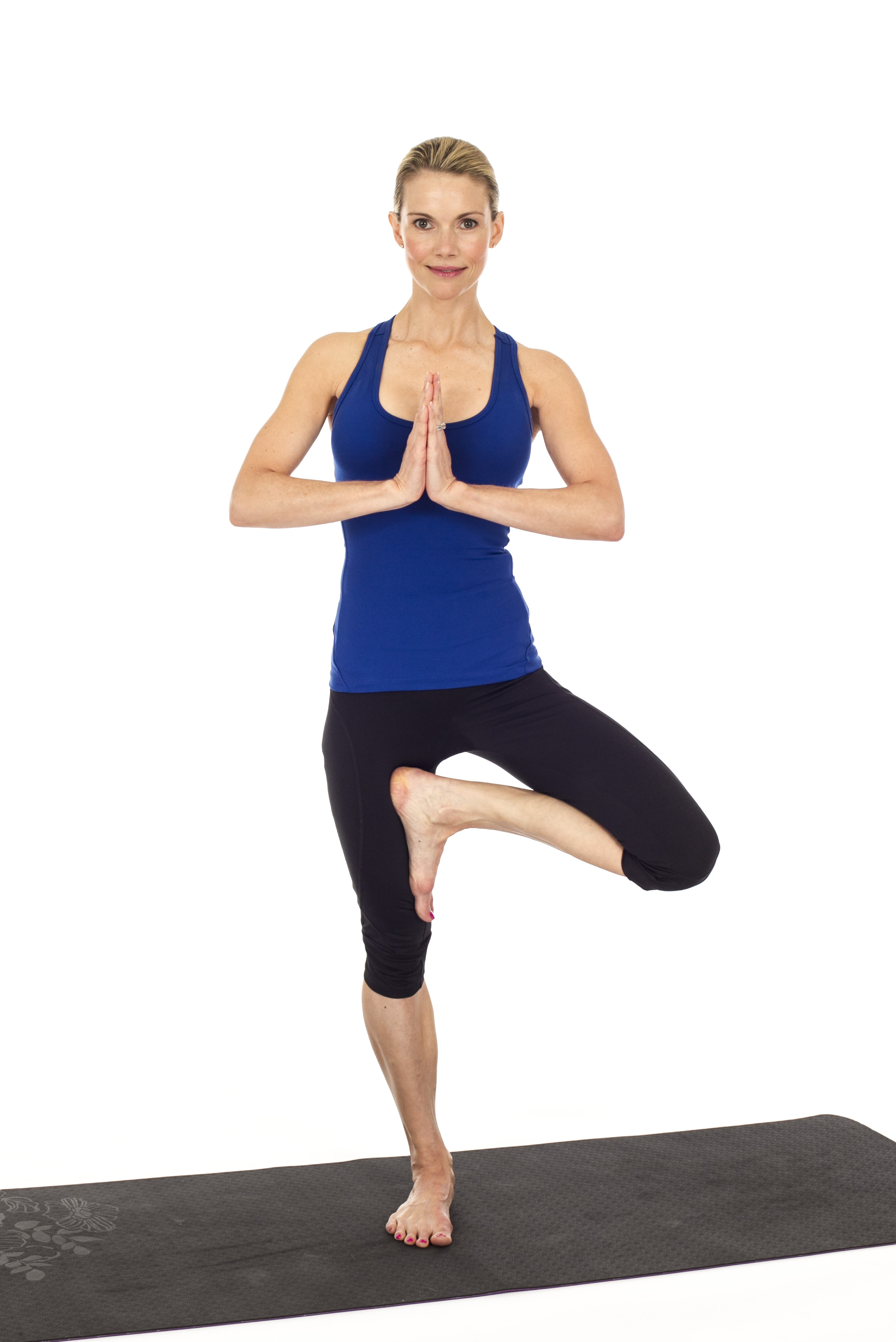
Commonly called Power yoga, Ashtanga is definitely physically demanding. It's probably best suited for an ex-athlete or someone looking to really push their body. Ashtanga Yoga is one of the oldest kinds of yoga. This branch of yoga has been mentioned in the Patanjali, a Sanskrit verse book. This type of yoga has 8 branches, which is why it is called Ashtanga yoga. Ashtanga, which means "eight limbs" in Sanskrit, is a fast-paced, intense style of yoga. A set series of poses is performed, always in the same order. This practice is very physically demanding because of the constant movement from one pose to the next and the emphasis on daily practice. Ashtanga is also the inspiration for what is often called Power Yoga, which is based on the flowing style of Ashtanga with out keeping strictly to the set series. It includes processes such as yoga positions, postures, breathing, concentration on objects, withdrawal of senses, meditation etc. The main benefit of this kind of yoga is the fact that it is supposed to purify the body and the mind at the same time and it is recommended for those people who are looking for a branch of yoga that would let them become physically and mentally fit as well. The postures and stances practiced under this type of yoga have to be done in different sets. There are six such sets. These sets are supposed to increase the heat of the body, hence remove impurities from the body, which will eventually lead to mental and spiritual wellness. Six established and strenuous pose sequences—i.e., the primary series, second series, third series, and so on—practiced sequentially as progress is made. Ashtangis move rapidly, flowing from one pose to the next with each inhale and exhale. (Each series of poses linked by the breath this way is called a vinyasa.) Originating in Mysore, India, the vigorous practice was devised to focus the minds and energy of teenage schoolboys—thus the countless vinyasas. Sri K. Pattabhi Jois brought the style to the U.S. in 1975. And though it's passed through generations of yogis, ashtanga has both stayed true to its roots and branched off in many directions here in the states. Those "vinyasa" or "flow" classes you take? Yep, they can be traced back to this taxing traditional style.
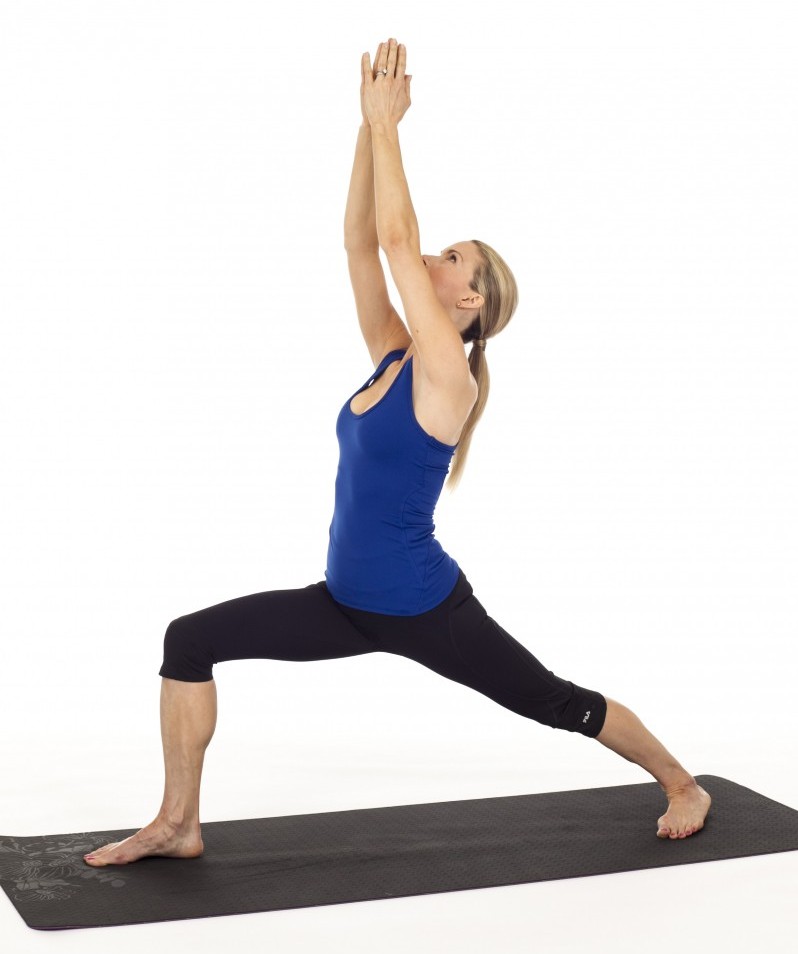
The well- known Sun Life Force (also known as: Sun Vital Force) or the "Surya Namaskara" form a part of this type of yoga. This is how Ashtanga yoga has to be started, followed by the sets that the person is practicing at that point of time. The first stage of Ashtanga yoga is known as "Yoga Chikitsa" or Yoga Therapy. The second stage is known as Nadi Shodana or Nerve cleansing and the last stage is Stirah Bagah, which is steady strength. The new fad in yoga- Power Yoga is actually adapted from this kind of yoga. It is also one of the most popular yoga types right now.
Best For
Weight loss, no-time-for-breath-catching cardio, strength gains sans weights, and making you feel like a young jock again. This style will get you cut fast through repetition of the athletic poses.
Who's gotta have it
CEOs, ESQs, CPAs (anyone with three letters after their name, even if they're OCD). "Ashtanga appeals to Type-A personalities—driven, intense people who like its linear quality," explains Natasha Rizopoulos, a dedicated ashtangi and star of the Yoga Step-By-Step DVD series.
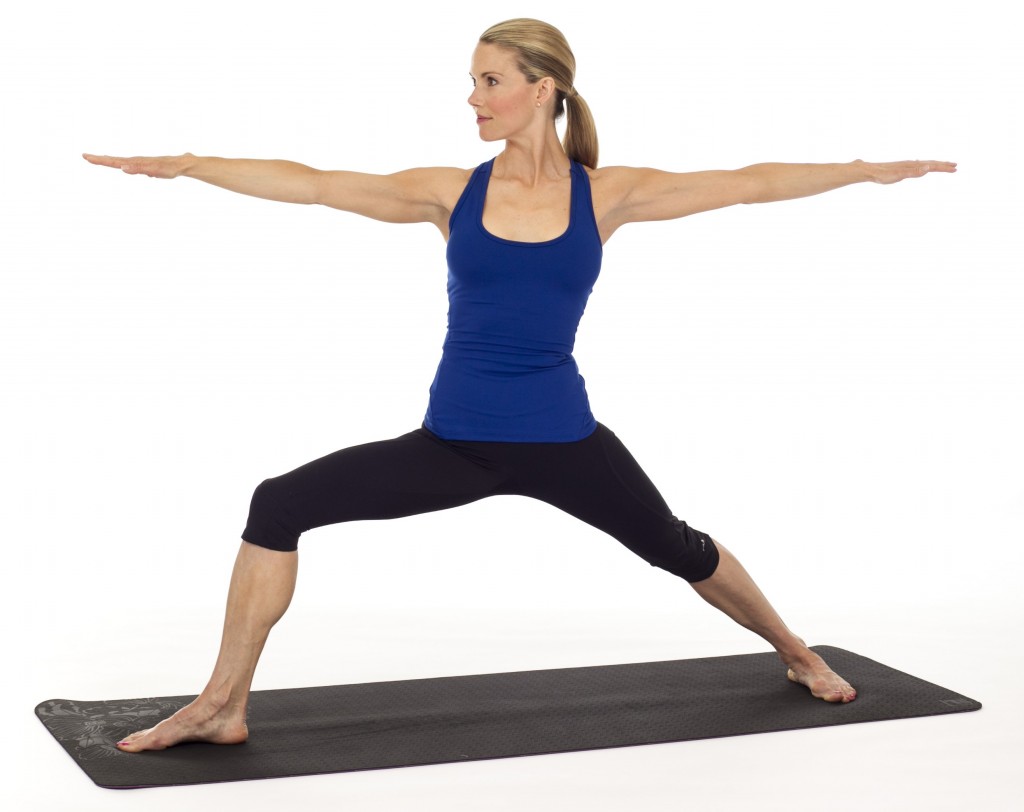
Need to know
The poses—before your first class. You can't flow if you don't know up dog from down dog. Get some experience with another slower-paced yoga style (see Iyengar) before trying ashtanga. Also, know that a "Mysore" ashtanga class is quite a bit different from other classes. In the Mysore style, students practice at their own pace in silence and the teacher simply walks around the room making adjustments. Beginners should find a "led" or "guided" primary series class before trying Mysore.
Trends and trivia
Thanks to Gwyneth Paltrow and an overeager fan at a charity auction, one ashtanga lesson grossed $55,000. Many other celebs have attributed their slamming bods (Madonna comes to mind) to the style and helped convert scores of aspiring hotties into ashtangis.This branch of yoga is based completely on faith and belief. While practicing yoga, it is generally suggested that the person place their faith and belief on some supreme power such as God or any higher consciousness. One of the most important prerequisite for doing this kind of yoga is to be actually interested in it and invested in it. People have to believe in this kind of yoga when they are doing it or the emotional flow and the energy derived from the yoga will not be beneficial at all. The biggest benefit of practicing Bhakti Yoga, out of all types of yoga is the fact that this can help cure a person's mental and emotional problems in such a way that their relationships with other people can also be improved.
Emotional benefit is something one can gain from all branches of yoga, but with Bhakti yoga, it is different. One can reduce the attachment they have with any negative entities with the help of these kinds of yoga. They can also prevent any excess ego, fickleness or any negative emotion or character trait, because the meditator or the yoga practitioner is relating themselves to a higher power, which will cause realization and inner peace as well.

Pioneered by Bikram Choudhury, this style is more generally referred to as Hot Yoga. Get ready to practice yoga in 105 degree heat and in 40% humidity -- hot! Though Bikram only has 26 poses and there's lots of alignment work so it might be a good fit for beginners. It is practiced in a 95 to 100 degree room, which allows for a loosening of tight muscles and profuse sweating, which is thought to be cleansing. The Bikram method is a set series of 26 poses, but not all hot classes make use of this series.
Yoga poses in a sauna-like room. The heat is cranked up to nearly 105 degrees and 40 percent humidity in official Bikram classes. If it's called "Bikram" (for inventor Bikram Choudhury), it will be a series of 26 basic yoga postures, each performed twice. There's no vinyasa-ing and in that kind of heat you'll be glad.
Best For
Weight loss—you can burn 350 to 600 calories in one class. You'll build stamina to boot. "Tolerating the heat is really an athletic challenge," says Donna Rubin, co-owner of Bikram Yoga New York.
Who's gotta have it
Exert-aholics, ex-jocks, and others who don't think they've worked out unless they leave a puddle.
Need to know
If touching your toes is a pipe dream, take heart: The steamy air increases flexibility. However, this kind of heat can have the same effect as lots of martinis, leaving you too loose. So be careful not to overstretch and injure yourself, champ. And leave the modesty at home—with most of your clothes. To keep your core temperature down, wear as little as possible. A sports bra and boy shorts will suffice. Most important: Bring water.
Trends and trivia
The style is best-known for Choudhury's flamboyant capitalist shtick (he collects Bentleys and Rolls Royces), outrageous quotes ("I have balls like atom bombs!"), and Hollywood students (including the likes of Goldie Hawn).
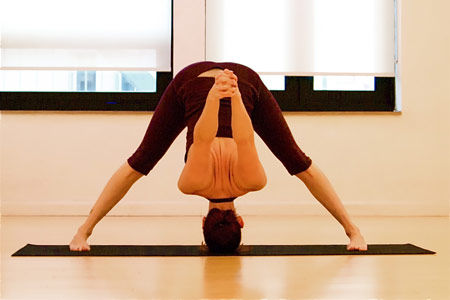
Class is also likely to be focused on slow and gentle movements so it's a great type of yoga to wind down with at night. Hatha is a very general term that can encompass many of the physical kinds of yoga. If a class is described as Hatha style, it is probably going to be slow-paced and gentle and provide a good introduction to the basic yoga poses. Hatha yoga relies extensively on postures and asanas for its benefit. In fact, the combination of the syllables ha and tha itself is supposed to awaken the two governing energies of life. Of all the types of yoga, this is the one that focuses on the need of advancing the life forces, energy, the chakra and the kundalini the most. Hatha Yoga is all about promoting the spiritual and mental well- being of a person. It consists of asana, that is followed by the six shatkarmas. Both these put together form the physical and mental detox. It also includes Pranayama, bandhas, which are spiritual awakening and energy revealing practices. Hatha yoga is done in combination, by combining all these practices. The asanas are supposed to rid the body of diseases, following which one can focus on making the body and the mind fit. The shatkarmas aid in cleansing the body, so that none of the energy is restrained or kept back. The Pranayama helps in spiritual awakening, which would definitely help a person lead a healthier and happier life, mentally and emotionally. However, it is suggested that people practice Pranayama only while under the guidance of a guru or a teacher.
By definition: a physical yoga practice, which is pretty much all yoga you'll find in this hemisphere. One of the six original branches of yoga, "hatha" encompasses nearly all types of modern yoga. In other words, hatha is the ice cream if styles like ashtanga and Bikram are vanilla and chocolate chip. Today, classes described as "hatha" on studio schedules, alongside vinyasa and prenatal, for example, are typically a basic and classical approach to yogic breathing exercises and postures.
Best For
Calming down, de-stressing, and too many physical benefits to list.
Who's gotta have it
Everyone! You choose the pace and style best for you.
Need to know
Hatha was originally intended to prep the body for meditation. The other five branches are bhakti (yoga of devotion), jnana (yoga of the mind), karma (yoga of selfless service), raja (yoga of self-control), and tantra (yoga of rituals - not sex as commonly believed). They may be hard to find at your local yoga studio, but give 'em a shot if you get the chance.
Trends and trivia
Commonly mispronounced, it's HAH-TA, not HAH-THA. The poster child for hatha yoga is probably Rodney Yee, one of the first commercially successful yoga teachers with a collection of instructional DVDs, books, and gear in his wake.
Expect lots of props with this type of yoga such as blocks, harnesses, straps, and even cushions. There's also a lot of focus on alignment so Iyengar can be great for physical therapy. Purist yoga named after founder B.K.S. Iyengar. Based on the teachings of the yogi B.K.S Iyengar, this style of practice is most concerned with bodily alignment. Iyengar practice usually emphasizes holding poses over long periods versus moving quickly from one pose to the next (flow). Also, Iyengar practice encourages the use of props, such as yoga blankets, blocks and straps, in order to bring the body into alignment. Props like blocks, straps, harnesses, and incline boards are used to get you more perfectly into positions and have earned the style its nickname, "furniture yoga." Appropriate for all ages and abilities, Iyengar yoga is all about precise alignment and deliberate sequencing. (Don't take that to mean easy.)
Best For
Learning the fundamentals, which builds a superior foundation for other styles. Plus it systematically works every part of your body, giving you great muscle definition, not mass.
Who's gotta have it
Patient perfectionists. Detail-oriented folks who want to do it right rather than just do it will get the most from it, says Roger Cole, Ph.D., a certified Iyengar teacher in Del Mar, California.
Need to know
If you're straining to reach the floor, use one of those foam or wooden blocks to meet your hand halfway. And remember, there's no shame in this. Also, keep in mind that Iyengar teachers are sticklers for alignment and like you to wear fitted clothing so they can check your form.
Trends and trivia
Iyengar can take credit for Andie McDowell's rocking 50-year-old figure and Light on Yoga, the 1966 bible of the discipline.
Jivamukti is mostly practiced in NYC as it was founded there in 1984 by Sharon Gannon and David Life. It's a mix of vinyasa flow sequencing infused with chanting and a vegetarian twist. A physical, edge-pushing practice that reintegrates yoga's traditional spiritual elements in an educational way for Western practitioners. Expect a theme for each class, Sanskrit chanting, and references to ancient scripture. Created by Sharon Gannon and David Life in 1984 in New York City, jivamukti translates as "liberation while living."
Best For
Experiencing an authentic, all-encompassing yoga practice. Part of the five tenets (see below) include tolerance towards all forms of religious beliefs (bhakti) and vegetarianism (ahimsa).
Who's gotta have it
Traditionalists. Jivamukti is heavily rooted in the traditions of yogic scripture including philosophy and chanting.
Need to know
Jivamukti encourages students to find a state of enlightenment in and out of their practice. You may get a spiel on social, political, or animal rights activism with asana. Five tenets form the foundation of each class: scripture, bhakti (devotion to God), ahimsa (nonviolence), nada yoga (yoga of sound), and meditation.
Trends and trivia
Gannon and Life are BFFs with Sting and Trudie Styler. Among their five worldwide centers, the downtown New York City one draws celebs from Russell Simmons to Christy Turlington.
This kind of yoga is something related to the knowledge and the wisdom derived from practicing yoga. It is the tradition that is used to achieve meditative strength and wisdom as well. In Jnana yoga, a person derives his knowledge and his awareness through meditation. Meditation will help the person introspect and find rational answers to all questions that plague the body and mind. Of course, Jnana Yoga can be practiced by people alone or with the help of a guru. The basic goals that this branch of yoga wishes to achieve is the experience of knowledge, developing wisdom and inner peace, realizing the truth and one's own nature and self- awareness. There is no need for any materials or things to practice this kind of yoga, for it is almost entirely about the mind and the soul.
This type of yoga focuses on bodily activities or physical activities. It's main intention is also to achieve inner peace and realization, but it does not really do much to calm mental tension or issues. Kriya yoga is a kind of yoga that would help people maintain some amount of physical fitness or even lose weight. There are around 70 kriyas that are a part of this kind of yoga, but only 20 of them are commonly known and practiced by people- for they are the ones that are the easier ones. Pranayama is a popular part of this yoga as well. This is not really a popular kind of yoga, even though there are mentions of it in Puranic texts. It has been revived recently and hopefully the revival is here to stay. People who are doing yoga for physical as well as mental and emotional fitness can combine this yoga with any other kind for the optimum benefit.
This is the yoga that deals with the consciousness. Of all the branches of yoga, this is the most relaxed one- it is there to make sure that people release all the emotional and spiritual blockages that are stopping them from achieving their goals. As a result of this, the main focus of this kind of yoga is not getting perfect stance or procedure, as in Ashtanga yoga, but it is getting the right kind of emotion.
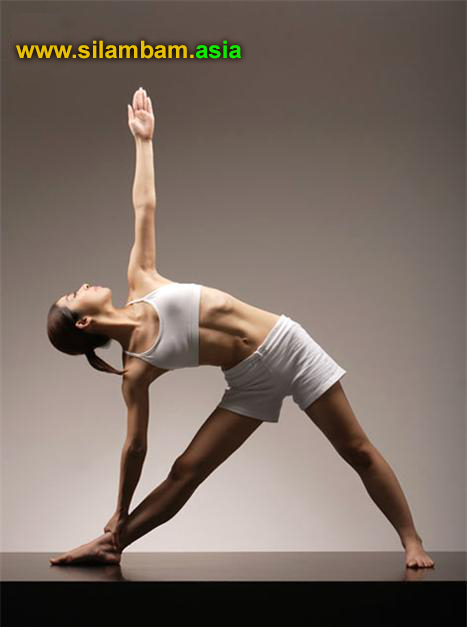
There are three stages in this kind of yoga - learning the postures and your body's limits, holding these postures and developing awareness of one's own self and body and the last stage is a meditative one in which the person learns how to shift from one posture to another fluidly, without disrupting their mental processes or thoughts. A three-part practice that teaches you to get to know, accept, and learn from your body. It starts with figuring out how your body works in different poses, then moves toward longer held postures and meditation, before tapping deep into your being to find spontaneous flow in asanas, letting your body be the teacher.
Best For
Self-empowerment. Knowing what your body can really do is a powerful tool that you can use in all realms of your life.
Who's gotta have it
Anyone looking for serious personal transformation and newbies. You'll learn the basics from mechanics, to breathwork, to the spiritual side.
Need to know
Kripalu teaches that each physical gesture influences and is influenced by your mind, and the practice helps you cultivate that awareness. Expect to get deep into your emotions, mind, and body. And Kripalu has a signature glossary based around empowerment, so get ready to "get conscious" and talk openly about "self-discovery."
Trends and trivia
The Kripalu Center for Yoga and Health in Lenox, Massachusetts is the style's hub. It offers high-quality teacher trainings and tons of diverse programming year-round by world-renowned instructors like Rodney Yee, Seane Corn, Beryl Bender Birch, and Ana Forrest.
"Kundalini" refers to the energy of the Root Chakra, which surrounds the area around your lower spine. Expect lots of work in your "core" area and classes are known to be pretty intense. Kundalini Yoga is one of the most practiced branches of yoga. It deals with the psychic centers in the body or the "chakras" that are in all individuals. There are six such chakras in the body and Kundalini yoga hopes to reach all of them. Kundalini yoga believes that there are no other chakras in the body than the six main ones - the Sahasrara, Ajna, Visuddhi, Anahata, Manipura, Swadishtana and Mooladhara. These are the chakras that connect us to the realms of our mind and heighten our consciousness. The Kundalini yoga concept says that all these chakras can be awakened if there six centres are awakened through Pranayama, bandha, asanas, mudras etc.
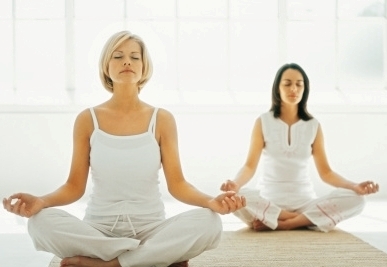
In fact, it is suggested that people practice this kind of yoga with some other branch of yoga- such as Mantra Yoga or Swara Yoga to get the most benefits. The emphasis in Kundalini is on the breath in conjunction with physical movement, with the purpose of freeing energy in the lower body and allowing it to move upwards. All asana practices make use of controlling the breath, but in Kundalini, the exploration of the effects of the breath (also called prana, meaning energy) on the postures is essential. Kundalini exercises are also called kriyas. Constantly moving, invigorating poses. The fluidity of the practice is intended to release the kundalini (serpent) energy in your body. Weren't aware you had any? Well, just think of it as an energy supply, coiled like a sleeping snake at the base of the spine, waiting to be tapped; the practice aims to do just that - awaken and pulse the stuff upward through the body.
Best For
Getting a yoga buzz. The breathing will skyrocket your energy, while the postures and meditation keep you grounded and focused.
Who's gotta have it
Anyone seeking greater spiritual and mind/body awareness. It's more than a workout.
Need to know
Your seven chakras - those are the places you'll be directing your energy to flow. Also, be aware that kundalini's poses and breathing are totally different from those practiced in other yoga styles. Don't worry if you are a beginner, though, most teachers are ready and willing to help. Just be ready to bow to Yogi Bhajan the pioneer of this path.
Trends and trivia
Christy Turlington is the style's token celeb devotee, and Gurmukh Kaur Khalsa is its queen-bee guru. Wearing her jeweled turban, Gurmukh, cofounder of Golden Bridge Yoga in Los Angeles, has taught countless Hollywood types and students from around the world.
Mantra Yoga is the type of yoga that is practiced through the chanting of mantra. Thousands of mantra exist and it is believed that the vibrations released by these mantra can really help a person achieve their dreams and even cure diseases. What mantra yoga focuses on is learning these mantra in the right way. These mantra are believed to have a lot of power and it will not do for people to just chant them any way they want. Some guidance is required in this sphere, to practice this branch of yoga in an effective manner. Practice of mantra yoga requires some items as well- such as incense sticks, rosaries, etc. There are two ways in which the mantra in this type of yoga are divided.
a. Tantric Mantra
Thousands of Tantric mantra exist and these are the mantra that people can use to attract wealth, health, money, success, etc. for themselves. But these mantra have a lot of restrictions on them, because of the power they have. It is suggested that people learn the Tantric mantra only with the guidance and help of a guru.
b. Pouranic mantra
These are simpler mantra that can be practiced by people without any guidance. These are basic mantra that are used for salvation and better emotional life of the people.
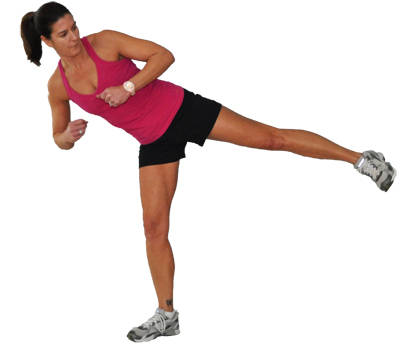
An active and athletic style of yoga adapted from the traditional ashtanga system in the late '80s to appeal to aerobic-crazed Westerners. After having studied with Pattabhi Jois, Beryl Bender Birch and Bryan Kest simultaneously pioneered this westernized ashtanga on the East and West coasts, respectively.
Power yoga doesn't stick to the same sequence of poses each time like ashtanga does, so the style varies depending on the teacher. Classes called "vinyasa" or "flow" in your gym or studio can be vastly different but, in general, stem from this movement and from ashtanga as well.
Best For

Burn, baby, burn. Isometric movements recruit every muscle in the body, which sparks metabolism and results in more calories burned.
Who's gotta have it
Athletic types love its sweaty side but find that after a while the mental benefits start catching up with their flexibility and strength. Like ashtangis, the power yoga crowd isn't afraid of a challenge.
Need to know
You may be an athlete but that doesn't mean power yoga will be easy. Don't forget that child's pose is your friend. "Athletes particularly need to start very slowly and carefully because their competitive nature will make them push and strain their bodies," Birch says. Also, call ahead and ask whether the classroom will be hot (as in Bikram) or not; it seems "power" translates as "hot" at some studios. And you should be armed with scant clothing and oodles of water if that's the case.
Trends and trivia
Baron Baptiste also teaches a system of power yoga and his Personal Revolution Bootcamps are packed with athletic types looking for a serious mind/body workout.
This is yoga that was initiated by the Sage Patanjali. This branch of yoga consists of eight stages, all prescribed by Patanjali. Raja Yoga is a yoga system that deals with the personality and the body. It deals in the practice of pranayama, asanas, yamas ( restraint ) etc. After the physical fitness of the body is achieved through asanas, this branch of yoga deals with mental and emotional benefits through pratyahara ( Sensory withdrawal ) and Dharana ( concentration ). This is followed by dhyana ( meditation ) which finally leads to Samadhi ( or absorption with the universal conscience ). This type of yoga is concerned with mental and physical well-being. It's basis is the fact that humans will be able to achieve spiritual fitness or emotional fitness only after their body is devoid of diseases and has become fit.
These are the traditional kinds of yoga, the ones that have been in existence for a long time now. Of course, these are just the major branches of yoga. There are many other kinds of yoga that people do practice now- yoga that has been developed by new teachers and by western influences as well- such as Iyengar Yoga, Bikram Yoga, Power Yoga etc. But all these new kinds of yoga have been influenced by the traditional kinds of yoga.
Looking to wind down after a long day of work? Or perhaps you want to quiet your mind? Restorative yoga might be the answer as it's focused on relaxation. Less work, more relaxation. You'll spend as many as 20 minutes each in just four or five simple poses (often they're modifications of standard asanas) using strategically placed props like blankets, bolsters, and soothing lavender eye pillows to help you sink into deep relaxation. There's also psychic cleansing: The mind goes to mush then you feel like new. It's something like group nap time for grownups. Better not to fall asleep, though.

Best For
Stress and injury rehab. You can direct blood flow to injured areas without straining them. A bolster under your knees while lying down, for example, supports the leg bones enough to let the muscles stop contracting.
Who's gotta have it
Everyone. Even if you're devoted to your particular practice, taking the time to do a restorative class will give your body an active relaxation session.
Need to know
Share what ails you with the teacher in private, before class, so they can pick poses that will lessen the pain of a slipped disk, for example. And slow-mo doesn't generate body heat, so bring along a sweatshirt, socks, and even a skull cap to stay warm, cozy, and cute.
Trends and trivia
Too low-key to be trendy. Should be.
An unhurried yoga practice typically of the same 12 basic asanas or variations therof every time, bookended by Sun Life Force (also known as: Sun Vital Force) and savasana (corpse pose).
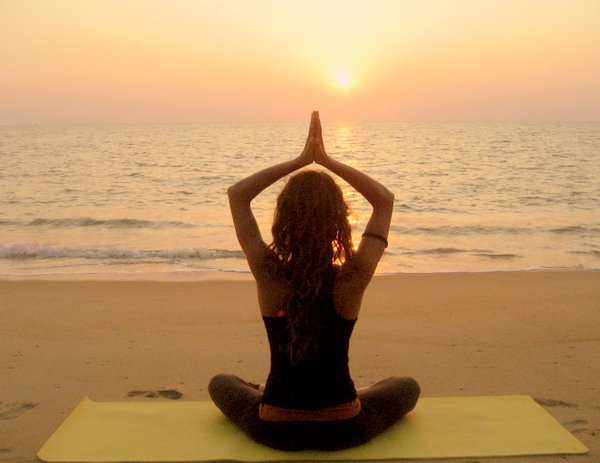
The system is based on a five-point philosophy that proper breathing, relaxation, diet, exercise, and positive thinking work together to form a healthy yogic lifestyle. One of the world's largest schools of yoga, Sivananda was brought to the West by Swami Vishnu-devananda in 1957 and now boasts nine ashrams, 17 centers, and more than 10,000 teachers worldwide.
Best For
Spiritual boosting. Each class opens and closes with chanting and meditation.
Who's gotta have it
Serious devotees looking for an intensive, ashram experience. Also, older yogis, who will find Sivananda is a fresh approach to boosting vitality, preventing disease, and restoring the body.
Need to know
Meat lovers are probably better off avoiding Sivananda (that's SHI-VAH-NON-DAH by the way) retreats for their vacation - the system highly encourages a vegetarian lifestyle to better digestion and promote health. And even though each class throughout the world is based on the same 12 asanas, "the classes are never routine because each teacher brings his own spirit to the class," says Rukmini, one of the teachers at the Sivananda Ashram Yoga Ranch in New York.
Trends and trivia
This style is known for bringing old-school ashrams to the West. These non-secular communes often operate on a suggested-donation basis and incorporate hours of bhakti (devotional) yoga chanting into the day.
This is also not a popular kind of yoga, but it is highly important. Swara, in Sanskrit means a sound or a note. Yoga means union. So the combination of Swara and Yoga depicts a cosmic consciousness through which people can learn how to control their breath and thus lead a better life. Yoga is based on the belief that if people learn how to breathe properly, half their problem will be solved. This is true to an extent- breathing exercises are a part of all branches of yoga. But this is a form of yoga that focuses primarily on the breathing and the manipulation of the swara through breathing. This type of yoga also ties people with the nature around them, so it is very vital in today's world. Swara yoga is not tough to do and it can calm a person easily. It can also improve their concentration. People of all ages can indulge in these breathing exercises.
Viniyoga is term used by T.K.V. Desikachar to describe the methodology that his father, revered teacher T. KrishnamAchãrya, developed late in his life. It is based on an individualized approach to each student, creating a practice that suits his or her unique stage of life, health, and needs. A highly individualized practice where yogis learn to adapt poses and goals to their own needs and abilities. Vini actually means differentiation, adaptation, and appropriate application. Instead of focusing on stretching to get strong and flexible, viniyoga uses the principles of proprioceptive neuromuscular facilitation (PNF). PNF simply means warming up and contracting a muscle before stretching it. Gary Kraftsow, founder of the American Viniyoga Institute, says this decreases your chance of injury.
Best For
A personalized practice. Viniyoga teachers usually work one-on-one with students so they'll create a series of modified asanas for your body and its limitations.
Who's gotta have it
Back-pain sufferers of all types from lower back to sciatica. Viniyoga will stabilize your sacrum, loosen back muscles, and balance out your spine.
Need to know
The National Institutes of Health uses Kraftsow to help with yoga studies. Finding a qualified viniyoga teacher can be tough but worth it. If there's no one in your area, attend a conference or invest in the products. Function wins over form in this style, so each pose will be adapted to give you what you need.
Trends and trivia
This style is steeped in yoga family history: It was started by T. KrishnamAchãrya and now carried on by his son T.K.V. Desikachar and grandson, Kausthub Desikachar. KrishnamAchãrya's brother-in-law is B.K.S Iyengar (see Iyengar), and Sri K. Pattabhi Jois (see Ashtanga) was his disciple. Talk about a good network.
Commonly called "Vinyasa flow" or just "flow", you'll definitely be moving, flowing from one pose to the next. Other than starting with a Sun Life Force (also known as: Sun Vital Force), no two classes will be alike. It's the most popular style of yoga in America. Like Hatha, Vinyasa is a general term that is used to describe many different types of classes. Vinyasa, which means breath-synchronized movement, tends to be a more vigorous style based on the performance of a series of poses called Sun Salutations, in which movement is matched to the breath. A Vinyasa class will typically start with a number of Sun Salutations to warm up the body for more intense stretching that's done at the end of class. Vinyasa is also called Flow, in reference to the continuous movement from one posture the the next.
A quiet, meditative yoga practice, also called taoist yoga. Yin focuses on lengthening connective tissues and is meant to complement yang yoga—your muscle-forming Anusara, ashtanga, Iyengar, or what have you. Yin poses are passive, meaning you're supposed to relax muscles and let gravity do the work. And they're long—you'll practice patience here too.
Best For
Preparing the body and mind for meditation practice. You'll develop a deeper, more thorough understanding of your entire body, aiding both your meditation and yang yoga.
Who's gotta have it
Athletes and yang-aholics whose joints may be getting crowded by muscle; yin can create space and restore range of motion. Beginners in meditation—the long-held poses lend a good opportunity to practice quieting the mind.
Need to know
Be prepared for long poses—they can be held from 5 to 20 minutes at a time. Yin yoga enables you to release deep bundles of tension in our key joints: ankles, knees, hips, the whole back, neck, and shoulders. The goal is increased flexibility and appreciating your individual abilities. "The fact that someone bends further than you isn't an indication that they are healthier," says Paul Grilley, anatomy scholar and yin yoga teacher. "It is only in relation to our own skeleton can we ask, 'Am I adequately flexible and strong?'"
Trends and trivia
None to speak of. It's under the radar—for now.
Asana
Asana
Published: 22 November 2014
Last Updated: 15 May 2025 04:30 AM (GMT+8)
Asana ( /ˈɑːsənə/; About this sound listen (help·info) Sanskrit: आसन asana [ˈɑːsənə] 'sitting down', आस as 'to sit down' ) is a body position, typically associated with the practice of Yoga, originally identified as a mastery of sitting still. In the context of Yoga practice, asana refers to two things: the place where a practitioner (or yogin, in general usage), yogi (male), or yogini (female) sits and the manner (posture) in which he/she sits. In the Yoga Sutra, Patanjali suggests that asana is "to be seated in a position that is firm, but relaxed" for extended, or timeless periods.
As a repertoire of postures were promoted to exercise the body-mind over the centuries to the present day, when yoga is sought as a primarily physical exercise form, modern usage has come to include variations from lying on the back and standing on the head, to a variety of other positions. However, in the Yoga Sutra, Patanjali mentions the execution of sitting with a steadfast mind for extended periods as the third of the eight limbs of Classical or Raja Yoga, but does not reference standing postures or kriyas. Yoga practitioners (even those who are adepts at various complex postures) who seek the "simple" practice of chair-less sitting generally find it impossible or surprisingly grueling to sit still for the traditional minimum of one hour (as still practiced in eastern Vipassana), some of them then dedicating their practice to sitting asana and the sensations and mind-states that arise and evaporate in extended sits.
Asana later became a term for various postures useful for restoring and maintaining a practitioner's well-being and improving the body's flexibility and vitality, with the goal of cultivating the ability to remain in seated meditation for extended periods. Asanas are widely known as "Yoga postures" or "Yoga positions". "Asana" quite simply means "a posture". Any way that we may sit, stand or position our hands is an asana. Therefore, many asanas are possible. However, a particular posture that leads you to a higher possibility is called a yogasana.
Yoga in the West is commonly practised as physical exercise or alternative medicine, rather than as the spiritual self-mastery meditation skill it is more associated with in the East.
Common practices
In the Yoga Sutra, Patanjali suggests that the only requirement for practicing asanas is that it be "steady and comfortable". The body is held poised with the practitioner experiencing no discomfort. When control of the body is mastered, practitioners are believed to free themselves from the duality of heat/cold, hunger/satiety, joy/grief, which is the first step toward the unattachment that relieves suffering. This non-dualistic perspective comes from the Sankya school of the Himalayan Masters.
Listed below are traditional practices for performing asanas:
- The stomach should be empty.
- Force or pressure should not be used, and the body should not tremble.
- Lower the head and other parts of the body slowly; in particular, raised heels should be lowered slowly.
- The breathing should be controlled. The benefits of asanas increase if the specific pranayama to the yoga type is performed.
- If the body is stressed, perform Corpse Pose (Shavasana) or Child Pose (Garbhasana)
- Such asanas as Sukhasana or Shavasana help to reduce headaches.
Pranayama
Pranayama, or breath control, is the Fourth Limb of ashtanga, as set out by Patanjali in the Yoga Sutra. The practice is an integral part of both Hatha Yoga and Ashtanga Vinyasa Yoga in the execution of asanas.
Patanjali discusses his specific approach to pranayama in verses 2.49 through 2.51, and devotes verses 2.52 and 2.53 of the Sutra to explaining the benefits of the practice. Patanjali describes pranayama as the control of the enhanced "life force" that is a result of practicing the various breathing techniques, rather than the exercises themselves. The entirety of breathing practices includes those classified as pranayama, as well as others called svarodaya, or the "science of breath". It is a vast practice that goes far beyond the limits of pranayama as applied to asana.
Number of positions
In 1959, Swami Vishnu-devananda published a compilation of 66 basic postures and 136 variations of those postures.
In 1975, Sri Dharma Mittra suggested that "there are an infinite number of asanas.", when he first began to catalogue the number of asanas in the Guruji Yoga Chart of 908 Postures, as an offering of devotion to his guru Swami Kailashananda Maharaj. He eventually compiled a list of 1300 variations, derived from contemporary gurus, yogis, and ancient and contemporary texts. This work is considered one of the primary references for asanas in the field of yoga today. His work is often mentioned in contemporary references for Iyengar Yoga, Ashtanga Vinyasa Yoga, Sivananda Yoga, and other classical and contemporary texts.
The 84 classic yoga asanas
A group of 84 classic yoga asanas taught by Lord Shiva is mentioned in several classic texts on yoga. Some of these asanas are considered highly important in the yogic canon: texts that do mention the 84 frequently single out the first four as necessary or vital to attain yogic perfection. However, a complete list of Shiva's asanas remains as yet unverified, with only one text attempting a complete corpus.
Commentary on this group of 84 asanas in the classic yoga texts is as follows:
Yoga Sutra of Patanjali (4-2nd century B.C.E.) [view more details]
does not mention a single asana by name, merely specifying the characteristics of a good asana. Later yoga texts however, do mention the 84 Classic Asanas and associate them with Shiva.
The Goraksha Saṃhita (10-11th century C.E.), or Goraksha Paddhathi
an early hatha yogic text, describes the origin of the 84 classic asanas. Observing that there are as many postures as there are beings, and asserting that there are 8,400,000 species in all, the text states that Lord Shiva fashioned an asana for each 100,000, thus giving 84 in all, although it mentions and describes only two in detail: the siddhasana and the padmasana.
The Hatha Yoga Pradipika (15th century C.E.)
specifies that of these 84, the first four are important, namely the siddhasana, padmasana, bhadrasana and simhasana.
The Hatha Ratnavali (17th century C.E.)
is one of the few texts to attempt a listing of all the 84, although 4 out of its list do not have meaningful translations from the Sanskrit, and 21 are merely mentioned without any description (author or source verification for this statement is still pending). In all, 52 asanas of the Hatha Ratnavali are confirmed and described by the text itself, or other asana corpora.
The Gheranda Saṃhita (late 17th century C.E.)
asserts that Shiva taught 8,400,000 asanas, out of which 84 are preeminent (greatest in importance), and 32 are useful for human being (in the world of mortals). These 32 in arranged in alphabetical order:
- bhadrasana
- Bhujangasana (Sarpasana)
- dhanurasana
- garudasana
- gomukhasana
- gorakshana
- guptasana
- kukkutasana
- kurmasana
- mayurasana
- mandukasana
- makarasana
- matsyasana
- matsyendrasana
- mritasana
- muktasana
- padmasana
- paschimottanasana
- sankatasana
- shalabhasana
- siddhasana
- simhasana
- svastikasana
- utkatasana
- uttanakurmakasana
- uttanamandukasana
- ushtrasana
- vajrasana
- virasana
- vrikshasana
- vrishasana
- yogasana
Shiva Saṃhita (17-18th century C.E.)
the poses ugrasana and svastikasana replace the latter two of the Hatha Yoga Pradipika (which is bhadrasana and simhasana).
Patenting of yoga asanas
In 2007, public awareness of increasing attempts to patent traditional yoga postures in the US, including 130 yoga-related patents in the US documented that year, prompted the government of India to seek clarification on the guidelines for patenting asanas from the US Patent Office. To clearly show that all asanas are public knowledge and therefore not patentable.
In 2008, the government of India formed a team of yoga gurus, government officials, and 200 scientists from the Council of Scientific and Industrial Research (CSIR) to register all known asanas in a public database. The team collected asanas from 35 ancient texts including the Hindu epics, the Mahabharata, the Bhagwad Gita, and Patanjali's Yoga Sutra.
In 2010, team from CSIR has identified 900 asanas for the database which was named the Traditional Knowledge Digital Library and made available to patent examiners.
Asanas
Adho Mukha Svanasana (Gajasana)
Adho Mukha Vrksasana
Aekpaadprasarnaasana
Anantasana
Anjaneyasana
Ardha Candrasana
Ardha Matsyendrasana
Akarna Dhanurasana
Astavakrasana
Baddha Konasana
Bakasana
Balasana
Bharadvajasana
Bhekasana
Bhujangasana (Sarpasana)
Bhujapidasana
Chakrasana
Chaturanga Dandasana
Dandasana
Dhanurasana
Dwi Pada Viparita Dandasana
Eka Pada Koundinyasana I
Eka Pada Koundinyasana II
Garbhasana
Garudasana
Gomukhasana
Halasana
Hanumanasana
Hasta Uttanasana
Janusirsasana
Kakasana
Kapotasana
Kukkutasana
Kurmasana
Makarasana
Malasana
Matsyasana
Mayurasana
Natarajasana
Navasana
Padahastasana
Padmasana
Parivrtta trikonasana
Paschimottanasana
Pashasana
Pavanamuktasana
Rajakapotasana
Salabhasana
Samakonasana
Sarvangasana
Shavasana
Siddhasana
Simhasana
Sirsasana
Sukhasana
Supta Virasana
Tadasana
Trikonasana
Tulasana
Urdhva Hastasana
UrdhvamukhaSvanasana
Ustrasana
Utkatasana
Uttana Shishosana
Uttanasana
Uttanapadasana
Utthita Trikonasana
Vajrasana
Virasana
Virabhadrasana I
Virabhadrasana II
Virabhadrasana III
Viparita Karani
Vriksasana
References
| References |
|---|
| Guruji Murugan Chillayah. (2012). Teaching and Essence of Indian Traditional Arts of Silambam, Varma Kalai and Traditional Yoga from Himalaya Mountain. Silambam Asia. https://silambam.asia |
| Monier-Williams, Sir Monier (1899). A Sanskrit-English Dictionary. Oxford Clarendon Press, p. 159 |
| s:Hatha Yoga Pradipika/1#Asanas |
| "Patanjali Yoga Sutra" by Swami Prabhavananda , published by the Sri Ramakrishna Math ISBN 81-7120-221-7 p. 111 |
| Verse 46, chapter II; for translation referred: "Patanjali Yoga Sutra" by Swami Prabhavananda , published by the Sri Ramakrishna Math ISBN 81-7120-221-7 p. 111 |
| Feuerstein, Georg (1996). The Shambhala Guide to Yoga. Shambhala Publications, Boston. pp. 26 |
| Patanjali (± 300-200 B.C.) Yoga Sutra, Book II:29 |
| Syman, Stefanie (2010). The Subtle Body: The Story of Yoga in America. Macmillan. p. 5. ISBN 0374236763. "But many of those aspects of yoga—the ecstatic, the transcendent, the overtly Hindu, the possibly subversive, and eventually the seemingly bizarre—that you wouldn't see on the White House grounds that day and that you won't find in most yoga classes persist, right here in America." |
| Arya, Pandit Usharbudh (aka Swami Veda Bharati) (1977/1985). Philosophy of Hatha Yoga. Himalayan Institute Press, Pennsylvania. |
| Swami Prabhavananda (Translator), Christopher Isherwood (Translator), Patanjali (Author) (1996, 2nd ed.). Vedaṅta Press. |
| Feuerstein, Georg (2003). The Deeper Dimensions of Yoga: Theory and Practice. Shambhala Publications, Massacheusetts. |
| Rama, Swami (1980). Living with the Himalayan Masters. Himalayan Institute Press, Pennsylvania; India. |
| Menuhin, Yehudi; Iyengar, B. K. S. (1979). Light on yoga: yoga dipika. New York: Schocken Books. ISBN 0-8052-1031-8. |
| Desikachar, T. K. V. (1999). The Heart of Yoga: Developing a Personal Practice. Rochester, Vt: Inner Traditions International. ISBN 0-89281-764-X. |
| Taimni, I. K. (1996). The Science of Yoga. Adyar, Madras: The Theosophical Publishing House. ISBN 81-7059-212-7. Eight reprint edition. |
| Kriyananda, Swami. The Art and Science of Raja Yoga, ISBN 81-208-1876-8 |
| Yogananda, Paramhansa, The Essence of Self-Realization, ISBN 0-916124-29-0 |
| Rama, Swami (1988). Path of Fire and Light, Vols. 1 & 2. Himalayan Institute Press, Pennsylvania; India. |
| Easa, Leila. "How to Salute the Sun". Yoga Journal. Retrieved 20 March 2013. |
| Ross A, Thomas S (January 2010). "The health benefits of yoga and exercise: a review of comparison studies". J Altern Complement Med 16 (1): 3–12. doi:10.1089/acm.2009.0044. PMID 20105062. |
| Hayes M, Chase S (March 2010). "Prescribing yoga". Prim. Care 37 (1): 31–47. doi:10.1016/j.pop.2009.09.009. PMID 20188996. |
| Alexander GK, Taylor AG, Innes KE, Kulbok P, Selfe TK (2008). "Contextualizing the effects of yoga therapy on diabetes management: a review of the social determinants of physical activity". Fam Community Health 31 (3): 228–39. doi:10.1097/01.FCH.0000324480.40459.20. PMC 2720829. PMID 18552604. |
| Gooneratne NS (February 2008). "Complementary and alternative medicine for sleep disturbances in older adults". Clin. Geriatr. Med. 24 (1): 121–38, viii. doi:10.1016/j.cger.2007.08.002. PMC 2276624. PMID 18035236. |
| Silverberg DS (September 1990). "Non-pharmacological treatment of hypertension". J Hypertens Suppl 8 (4): S21–6. PMID 2258779. |
| Labarthe D, Ayala C (May 2002). "Nondrug interventions in hypertension prevention and control". Cardiol Clin 20 (2): 249–63. PMID 12119799. |
| Vatsal Anand. Yoga for Diabetics. OnlyMyHealth. |
| Vishnu-devananda, Swami (1959) The Complete Illustrated Book of Yoga |
| Mittra, Dharma, (2003) Asanas: 608 Yoga Poses", ISBN 1-57731-402-6 |
| "Yoga.com". Yoga.com. 2005-02-27. Retrieved 2011-10-29. |
| Yoga Journal, Talking Shop with Dharma MittraDharma Mittra - the master teacher behind the 908 yoga asana poster -shares his insight on the practice |
| Patanjali Yoga Sutra, Book 2 |
| Singh, T D; Hinduism and Science |
| Goraksha Paddhathi |
| Chapter 1, 'On Asanas', Hatha Yoga Pradipika |
| Yoga Institute (Santacruz East Bombay India) (1988). Cyclopaedia Yoga. Yoga Institute. p. 32. Retrieved 10 April 2011. |
| Mallinson, James (2004). The Gheranda Saṃhita: the original Sanskrit and an English translation. YogaVidya.com. p. 16. ISBN 978-0-9716466-3-6. Retrieved 10 April 2011. |
| Mallinson, James (2004). The Gheranda Saṃhita: the original Sanskrit and an English translation. YogaVidya.com. p. 17. ISBN 978-0-9716466-3-6. Retrieved 10 April 2011. |
| "US patent on yoga? Indian gurus fume". The Times of India. May 18, 2007. Retrieved 25 May 2010. |
| "Indian Government in Knots Over U.S. Yoga Patents". ABC News. May 22, 2007. |
| "GRANT OF PATENTS ON YOGA BY UNITED STATES PATENT AND TRADEMARK OFFICE – THE FACTUAL POSITION". PIB, Ministry of Commerce & Industry. June 13, 2007. |
| "India Documents 900 Yoga Poses to Block Patents". Voice of America News. 11 Jun 2010. |
| Nelson, Dean (23 Feb 2009). "India moves to patent yoga poses in bid to protect traditional knowledge". The Daily Telegraph (London). |
Surya Namaskar
Surya Namaskar सूर्य नमस्कार मंत्र
Published: 22 November 2014
Last Updated: 15 May 2025 04:30 AM (GMT+8)
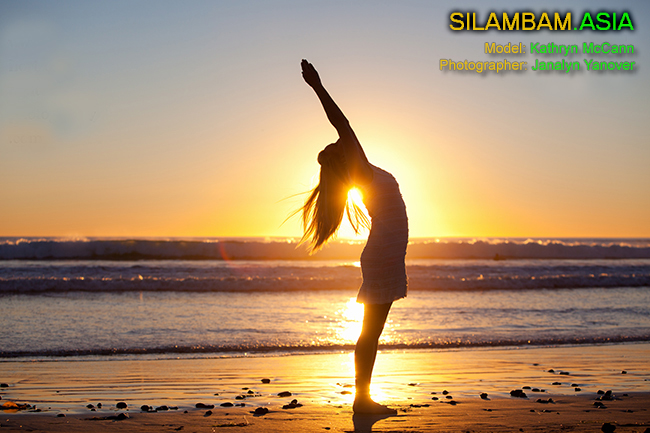
Surya Namaskara (IPA: [suːrjɐ nɐmɐskɐːrɐ]; IAST: Sūrya Namaskara) also known in English as Sun Salutation (lit. "salute to the sun") is a Yoga series and common sequence of asanas. Its origins lie in India where its large Hindu population worships Surya, the Hindu or Vedic solar deity, by concentrating on the Sun, for vitalization. The practice supports development of the koshas, or temporal sheaths, of the subtle body.
This sequence of movements and asanas can be practised on varying levels of awareness, ranging from that of physical exercise in various styles, to a complete sadhana which incorporates asana, pranayama, mantra and chakra meditation. It is often the beginning vinyasa within a longer yoga series. Sūrya Namaskara may also refer to other styles of "Salutations to the Sun".
The physical aspect of the practice 'links together' 12 asanas in a dynamically expressed series. A full round of Surya Namaskara is considered to be two sets (consists of set start with right leg is moved first to backward) of the 12 asanas, with a change in the second set where the opposing leg is moved first. The asanas included in the Sun Life Force (also known as: Sun Vital Force) differ from tradition to tradition. (see diagram below for Surya Namaskar flow)
Benefits of Surya Namaskar
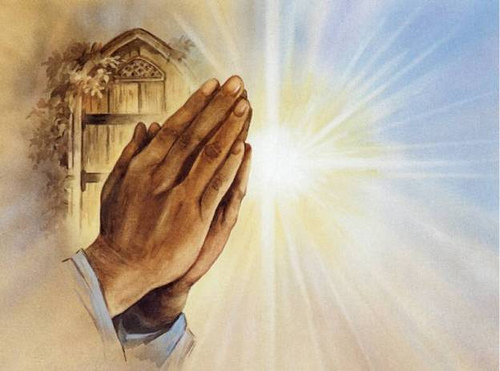
The physical aspect of what is called yoga in recent years, the asanas, has been much popularized in the West. Physically, the practice of Surya Namaskar is a dynamic exercise, which involves twelve (12) postures / asanas is considered to:
- improve flexibility of body by loosening all the joints and muscles
- improve strength
- improve balance
- reduce Nervous tension, stress and anxiety are eliminated
- reduce symptoms of lower back pain
- be beneficial for asthma and chronic obstructive pulmonary disease (COPD)
- increase energy and decrease fatigue
- shorten labor and improve birth outcomes
- improve physical health and quality of life measures in the elderly
- improve diabetes management
- reduce sleep disturbances
- reduce hypertension
- improve blood circulation
- Yoga can control the complications of diabetes
- Thought power is enhanced
- All major organs, mind and body is revitalized
The emphasis on the physical benefits of yoga, attributed to practice of the asanas, has de-emphasized the other traditional purposes of yoga which are to facilitate the flow of prana (vital energy) and to aid in balancing the koshas (sheaths) of the physical and metaphysical body.
Practice
- As per the scriptures one who performs the Surya Namaskar daily does not get poor in a thousand births.
- In a traditional Hindu context, Surya Namaskar is performed facing in the direction of the rising (east) or setting (west) sun.
- Surya Namaskar, like most asanas, is recommended to be performed on an empty stomach. Therefore some recommend a gap of at least two hours after eating and before performing the Namaskara. It is generally practiced in the morning before breakfast or in the evening before dinner.
- There are a total of 8 different asanas in the sequence of the 12 asana changes of Surya Namaskar. Some asanas are repeated twice in the same cycle of a Surya Namaskar.
- Pranayama is synchronized with asanas.
- There are 5 ways in which breathing should be done during Surya Namaskar.
- Chakras are points-of-focus, when performing asanas.
- Mantra can be pronounced at the start of each Surya Namaskar. Pranavakshar of Aum + Beejakshara / Bija (seed) or the 12 mantra specific to each asana can also be chanted while performing each asana. The 12 specific mantra, though, repeated mentally instead.
- Shavasana is practiced at the end of practice for rest.
There few other variations for Surya Namaskar been practiced. This is the one of Surya Namaskar variation practiced in Silambam Asia:
| Step | Asana | Breath | Chakra | Position | + Beejakshara / Bija (seed) | |
|---|---|---|---|---|---|---|
| Sanskrit | Transliteration | |||||
| START | Tadasana (Mountain Pose)
|
breath normally, inhale deep before start asana #1 |
- | - | - | - |
| 1 | Pranamasana with "Athma Anjali Mudra" (Prayer pose)
|
exhale | Anahata | Heart | ॐ ह्रां | Aum hraṁ |
| 2 | Hasta Uttanasana (Raised Arms pose)
Notes: |
inhale | Vishuddhi | Throat | ॐ ह्रीं | Aum hriṁ |
| 3 | Paada Hastasana (Standing Forward Bend)
if you have back pain, just do half-way:
Notes: |
exhale | Swadhisthana | Sacrum | ॐ ह्रूं | Aum hrūṁ |
| 4 | Ashwa Sanchalanasana (Equestrian pose)
Notes: |
inhale | Ajna | Third eye | ॐ ह्रैं | Aum hraiṁ |
| 5 | Phalakasana / Dandasana (Plank / Stick pose)
|
exhale | Swadhisthana | Sacrum | ॐ ह्रौं | Aum hrauṁ |
| 6 | Ashtanga Namaskara (Salute with eight parts or points), touch the ground:
Notes: |
suspend | Manipura | Solar plexus | ॐ ह्रः | Aum hraḥ |
| 7 | Bhujangasana (Cobra pose)
Notes by Notes: |
inhale | Swadhisthana & Manipura |
Sacrum & Solar plexus |
ॐ ह्रां | Aum hraṁ |
| 8 | Adho Mukha Svanasana (Downward facing dog) /
Notes to help make your back body to straighten: |
exhale | Vishuddhi | Throat | ॐ ह्रीं | Aum hriṁ |
| 9 | Ashwa Sanchalanasana (Equestrian pose)
Notes: |
inhale | Ajna | Third eye | ॐ ह्रूं | Aum hrūṁ |
| 10 | Paada Hastasana (Standing Forward Bend)
if you have back pain, just do half-way:
Notes: |
exhale | Swadhisthana | Sacrum | ॐ ह्रैं | Aum hraiṁ |
| 11 | Hasta Uttanasana (Raised Arms pose)
Notes: |
inhale | Vishuddhi | Throat | ॐ ह्रौं | Aum hrauṁ |
| 12 | Pranamasana with "Athma Anjali Mudra" (Prayer pose)
|
exhale | Anahata | Heart | ॐ ह्रः | Aum hraḥ |
| END | Tadasana (Mountain Pose)
|
breath normally, to relax heartbeat | - | - | - | - |
Mantra
Sun Salutation mantra add a profound spiritual touch to the asana practice.
12 Surya Namaskar are practised per cycle.
In the table, the following first 12 mantra corresponds to the 12 asanas in Surya Namaskar. You may either chant the mantra verbally or repeated mentally in your mind during the performance of each corresponding asana. They can also be pronounced at Pranamasana. Now let's see how you can chant the mantra while doing the Sun Salutation sequence. One set of Sun Salutation comprises two rounds – one with the right leg, one with the other. It is ideally recommended to practice 12 sets of Sun Salutation daily. But you can choose your own number, according to what seems comfortable. If you choose to do 6 sets or more, chant one mantra each at the start of every new sequence. Recite the first mantra as you start one set, finish the two rounds in that set and then start the next set with the second mantra and so on. This way, you would have chanted 12 mantra with 12 sets of Sun Salutation.
If you practice less than 12 rounds of Sun Salutation – 2 or 4 – you can recite one mantra each with every posture in the sequence. This would make it 12 mantra corresponding to 12 poses of Surya Namaskar.
| Salutation | Sanskrit | Transliteration |
|---|---|---|
| 1 | ॐ मित्राय नमः | Aum mitraya namaḥ ( Aum Mitraaya Namaha ) |
| 2 | ॐ रवये नमः | Aum ravaye namaḥ ( Aum Ravaye Namaha ) |
| 3 | ॐ सूर्याय नमः | Aum sūryaya namaḥ ( Aum Suryaya Namaha ) |
| 4 | ॐ भानवे नमः | Aum bhanave namaḥ ( Aum Bhaanave Namaha ) |
| 5 | ॐ खगाय नमः | Aum khagaya namaḥ ( Aum Khagaya Namaha ) |
| 6 | ॐ पूष्णे नमः | Aum pūshne namaḥ ( Aum Pooshne Namaha ) |
| 7 | ॐ हिरण्यगर्भाय नमः | Aum hiranya garbhaya namaḥ ( Aum Hiranyagarbhaaya Namaha ) |
| 8 | ॐ मरीचये नमः | Aum maricaye namaḥ ( Aum Mareechaye Namaha ) |
| 9 | ॐ आदित्याय नमः | Aum adityaya namaḥ ( Aum Aadityaaya Namaha ) |
| 10 | ॐ सवित्रे नमः | Aum savitre namaḥ ( Aum Savitre Namaha ) |
| 11 | ॐ अर्काय नमः | Aum arkaya namaḥ ( Aum Aarkaaya Namaha ) |
| 12 | ॐ भास्कराय नमः | Aum bhaskaraya namaḥ ( Aum Bhaaskaraya Namaha ) |
| 13 | ॐ श्रीसवितृसूर्यनारायणाय नमः | Aum Srisavitṛsūryanarayanaya namaḥ ( Aum Sri savitre Surya narayanaya Namaha ) |
The following mantra is pronounced at the beginning of a Surya Namaskara cycle:
ॐ ध्येयः सदा सवित्र मण्डल मध्यवर्ती नारायण सरसिजा सनसन्नि विष्टः
केयूरवान मकरकुण्डलवान किरीटी हारी हिरण्मय वपुर धृतशंख चक्रः
Aum dhyeyaḥ sada savitra manḍala madhyavarti narayana sarasija sanasanni vishtaḥ
keyūravana makarakunḍalavana kiriti hari hiranmaya vapura dhṛtaSaṁkha cakraḥ
The following mantra is pronounced at the end of a Surya Namaskara cycle:
आदित्यस्य नमस्कारन् ये कुर्वन्ति दिने दिने
आयुः प्रज्ञा बलम् वीर्यम् तेजस्तेशान् च जायते
adityasya namaskaran ye kurvanti dine dine
ayuḥ prajña balam viryam tejasteSan ca jayate
For those who salute the sun every day,
life expectancy, conscious, strength, courage and vital power shall grow.
Shavasana (Corpse Pose)
Shavasana is practiced to take rest after complete full sets of Surya Namaskara
Palm facing upwards. As you exhale, CLOSE your eyes.

Now, take a relaxing breath. While eyes closed:
Inhale, Lift up right leg little bit, feel the stretch at whole right leg muscle until hip & toes. Exhale, Relax.

Inhale, Lift up left leg little bit, feel the stretch at whole left leg muscle until hip & toes. Exhale, Relax.

Inhale, Stretch whole arm & fingers by clunch and release. Exhale, Relax.


Inhale, Stretch "ONLY" hip by push lifting upward. Arm and leg is remain relaxed. After that, Exhale, Relax.

Inhale, Stretch "ONLY" chest by push lifting upward. Arm and leg is remain relaxed. After that, Exhale, Relax.

Inhale, Roll your neck "ONLY" to right and then to left. Arm and leg is remain relaxed. After that, Exhale, Relax.

Inhale, Stretch your face, eyes, eye brows, mouth (while eyes remain closed). Arm and leg is remain relaxed. After that, release your jaw bones, BREATH NORMAL and calm, Relax.

Total body, mind and all organ feel to deep rest. Relax for few minutes.

Inhale deep, Stretch you body, toes and finger. Stretch your arm above the head. After stretch, Open eyes.

Turn to you right side for few seconds, and slowly come to sitting position (before stand up) / continue to do other asana.

Ancient
The Hatha Yoga Pradipika, the oldest known hatha yoga text does not mention "Sun Salutations" but mentions a sūrya-bhedana (sun-piercing) kumbhaka (II, 44 and 48-50), while the Gherand Samhita Sri. T. Krishnamacharya's teachings are largely responsible for the modern version of Sūrya Namaskara as seen in modern day Ashtanga Vinyasa Yoga and the Visesha Vinyasa Sun Salutation subroutine from Vinyasa Krama Yoga, as well as a host of other popular forms of yoga. K. Pattabhi Jois claims to have taught exactly as he had learned from Krishnamacharya, though other than personal testimony, there seems to be no other evidence as to the precise content of Krishnamacharya's teachings. While Krishnamacharya's specific sources for his yoga teachings are unclear, it is said that he learned from Sri Ramamohana Brahmachari in the Himilayan Mountains (perhaps Muktinath where his son has visited, but certainly somewhere near the Gandaki River in Nepal) beginning in 1916; however, the source of his teaching (at the Mysore Yogashala or otherwise) is not otherwise documented. Krishnamacharya's son attests to his father having developed some of his teachings himself. There is the possibility that he may have been influenced by the Mysore Palace Gymnastics Tradition.
Puranic origins - Valmiki RamayanaAditya Hridayam is another ancient practice which involves a variation of Sūrya Namaskara. It is a procedure of saluting The Sun, taught to Sri Rama by Sage Agastya, before his fight with Ravana. It is described in the "Yuddha Khanda" Canto 107 of Ramayana.
There are in total 124 names praising the Sun in the whole procedure. The names in verses 10 - 13 are given below:
"Aditya, Savita, Surya, Khaga, Pushan, Gabhastiman, Suvarnasadrisa, Bhanu, Hiranyaretas, Divakara, Haridasva, Sahasrarchish, Saptasapti, Marichiman, Timironmathana, Sambhu, Twashta, Martanda, Ansuman, Hiranyagarbha, Sisira, Tapana, Bhaskara, Ravi, Agnigarbha, Aditiputra, Sankha, Sisiranasana".
The names in bold are the names used in the present day popular Surya Namaskar are present in these four verses.
In verse 15 - 20, salutations to Sun are described. An example from the 15th verse is:
"the resplendent among the splendid. Oh! God, appearing in twelve forms (in the shape of twelve months of the year) salutations to you".
Vedic originsThere are numerous references of praising the Sun for the purpose of good health and prosperity, in Vedas. Some of these Vedic hymns were incorporated into Nitya Vidhi (Daily mandatory routine for a Hindu) for the well being of an individual, through salutations to the Sun. These daily procedures were termed as Surya Namaskara (literally translates as "Sun Life Force (also known as: Sun Vital Force)"). Physical prostration to Sun, showing complete surrender of oneself to God, is the main aspect of these procedures. The forms of Surya Namaskar practiced vary from region to region. Two such popular practices are Trucha Kalpa Namaskarah and Aditya Prasna, discussed below.
Trucha Kalpa Namaskarah
Trucha Kalpa Namaskarah has its origins in Rig Veda. Each Mantra in Veda is called a "rucha". Group of three rucha is called as Trucha. "Trucha Kalpa Namaskarah" is a method of performing Surya Namaskar using three ruchas from the Veda.
Sankalp
You make a resolution [Sankalp] in the beginning, that you are doing this act of performing 'sūrya namaskar' by praying to the Sun, requesting him to give you good health and strength to work hard.
Dhyana Mantra
Then dhyana mantra is recited / chanted.
Verse:
ॐ ध्येयः सदा सवित्र मण्डल मध्यवर्ती नारायण सरसिजा सनसन्नि विष्टः
केयूरवान मकरकुण्डलवान किरीटी हारी हिरण्मय वपुर धृतशंख चक्रः
dhyeyḥ sada savitṛmaṁḍalamadhyavarti
narayanaḥ sarasijasanasaṁnivishtaḥ |
keyūravan makarakuṁḍalavan kiriti
harihirnmayavapurdhṛtaSaṁkhacakraḥ ||
Meaning:
"Always worship 'The Sun' (our energy source) sitting at the centre of the solar system (savitra mamdal madhyavarti) on Lotus, wearing Keyoor, Makarkundal crown and holding conch, chakra and having glittering golden body."
Word by word translation of dhyana Mantra
savitṛmaṁḍalamadhyavarti (Savitrumandala-Madhyavartee) - He who lives in the centre of the solar orb.
sarasijasanasaṁnivishtaḥ (Sarasijaasana Sannivishtah) - Who sits in Padmaasana
keyūravan makarakuṁḍalavan kiriti hari (Keyuravaan Makara Kundalavaan Kireetee Haaree) - Who has the bracelets, the big ear-rings in the ear, the crown on the head and the pearl garland dangling on the breast.
dhṛtaSaṁkhacakraḥ (Dhrita-Sankha-Chakrah) - Holder of Conch and Chakra.
hirnmayavapurd (Hiranmayavapuh) - Golden-hued body.
narayanaḥ (Narayanah) - Narayana
dhyeyḥ sada (Sadaa Dhyeyah) - Always to be meditated.
Sūrya Namaskar Mantra
After dhyana mantra, Surya Namaskars are performed by chanting mantra. Mantra are arranged in a specific way. They consist of the three ruchas taken from 1st Mandala, 9th anuvak 50th Sookta in Rig Veda, which are composed in 'Anushtup Chandas'. Kanva Sage [Rushi] is believed to have composed them.
Transliteration of the three ruchas :
udhyannadhya mitramaha arohannuttaraṃ divam |
hṛdroghaṃ mamsūrya harimanaṃca naSaya ||
Sukeshume harimanaṃ ropanakasu dadhmasi |
atho haridraveshume harimanaṃ ni dadhmasi ||
udaghadayamadityo viSvena sahasa saha |
dvishantaṃ mahyaṃ randhyan mo aham dvishate radham ||
Translation of the three ruchas :
11. Rising this day, O rich in friends, ascending to the loftier heaven,
Surya remove my heart's disease, take from me this my yellow hue.
12. To parrots and to starlings let us give away my yellowness,
Or this my yellowness let us transfer to Haritala trees.
13. With all his conquering vigour this Aditya hath gone up on high,
Giving my foe into mine hand: let me not be my foeman's prey.
Meaning of the three ruchas :
"O, radiant Sun rising in the sky, please destroy the disease in my heart as well as diseases of my external body. Let inner and outer diseases of my body be destroyed by brilliantly shining Sun-the son of Aditi."
Sūrya Namaskar Nama Mantra
Nama mantra of the Surya Namaskar have FOUR sections. This is the component for creation of "Nama Mantra".
(1) Pranavakshar - Aum
(2) 6 Beejakshara / Bija (seed) - hraṁ, hriṁ, hrūṁ, hraiṁ, hrauṁ, hraḥ (arranged in order of their usage)
(3) 12 Paada - 4 Paada for each of the 3 ruchas (are explained in detail as above in 3 ruchas segment).
(4) 12 names of Surya 'The Sun' - in the order of their usage are:
| Names of Surya | Meanings |
|---|---|
| Mitra (mitraya) | Who is friendly to all |
| Ravi (ravaye) | The shining one, the radiant one |
| Surya (sūryaya) | Who is the dispeller of darkness and responsible for bringing activity |
| Bhanu (bhanave) | One who illumines, the bright one |
| Khaga (khagaya) | Who is all-pervading, one who moves through the sky |
| Pushan (pūshne) | Giver of nourishment and fulfillment |
| Hiranyagarbha (hiranya garbhaya) | Who has golden color brilliance |
| Marichiman (maricaye) | The giver of light with infinite number of rays |
| Aditya (adityaya) | The son of Aditi – the cosmic divine Mother |
| Savitr (savitre) | One who is responsible for life |
| Arka (arkaya) | Worthy of praise and glory |
| Bhaskara (bhaskaraya) | Giver of wisdom and cosmic illumination |
The mantra, start with short arrangements of the words at the beginning of the worship and evolve into more complex structures near the end. The mantra for the ease of discussion can be classified into four steps.
Step 1
Aum + 1 Beejakshara / Bija (seed) + 1 rucha + 1 Beejakshara / Bija (seed) + Aum + 1 Name of Sun
Example Mantra :
Aum hraṁ udhyannadhya mitramaha hraṁ Aum mitraya namaḥ ||
Aum hriṁ arohannuttaraṃ divam hriṁ Aum ravaye namaḥ ||
12 mantra, formed using the 12 Paada of the ruchas, are chanted / recited at this step. As there are only 6 Beejakshara / Bija (seed), for the seventh mantra the first Beejakshara / Bija (seed) is used and the order is repeated up to the 12th mantra. For each mantra one Surya Namaskar is performed.
Step 2
"Aum + 2 Beejakshara / Bija (seed) + 2 Paada + 2 Beejakshara / Bija (seed) + Aum + 2 Names of Sun"
Example Mantra :
Aum hraṁ hriṁ udhyannadhya mitramaḥ arohannuttaraṁ divam hraṁ hriṁ Aum mitraya ravaye namaḥ ||
6 mantra are chanted / recited at this step as there are 12 Paadas. For each mantra one Surya Namaskar is performed.
Step 3
"Aum + 4 Beejakshara / Bija (seed) + 4 Paada + 4 Beejakshara / Bija (seed) + Aum + 4 Names of Sun"
3 mantra are chanted / recited at this stage. For each mantra one Surya Namaskar is performed.
Step 4
"Aum + ALL Beejakshara / Bija (seed) + All Paadas + ALL Beejakshara / Bija (seed) + Aum + All Names of Sun"
1 mantra is chanted / recited at this step. One Surya Namaskar is performed at this step.
Thus after all the four steps, 22 mantra are chanted / recited and with each mantra one Surya Namaskar is performed. When this cycle is repeated three times, 66 Surya Namaskars are performed. This way ONE Trucha Kalpa Namaskar is completed.
Teertha Shloka
In the end, Teertha Shloka is chanted / recited.
Verse:
आदित्यस्य नमस्कारन् ये कुर्वन्ति दिने दिने |
जन्मान्तरसहस्रेषु दारिद्र्यं नोपजायते ||
अकाल् म्रूत्यूहरणं सर्व व्याधिविनाशनम |
सूर्य पादोदकं तीर्थ जठरे धारयाम्यहम ||
अनेन नमस्काराख्येन कर्मगा श्रीसवितृसूर्यनारायण: प्रीयताम ||
adityasya Namaskaraṁ ye kurvanti dinedine |
janmaṁ tarasahasre shudaridhryaṁ nopajayate ||
akalamṛtyuharanm sarvavyadhivinaSanam |
sūryapadodakaṁ tirtham jatharedharayamyaham ||
anen Namaskarakhyen karmaga shrisavitruSuryanarayan priyataam ||
Meaning:
Those who perform Soorya Namaskars daily, do not face poverty in life (this actually relates to Richness of Health, not financial matters), one does not face early death or suffer from diseases. Drink the water kept before The Sun.
In some versions of this mantra सूर्य Surya in the second verse is replaced by विष्णो Vishnu. It is recited while taking Tirth [Holy Water] after doing Surya Namaskar. This is the most commonly followed Mantra by practitioners of Surya Namaskar.
आदित्यस्य नमस्कारन् ये कुर्वन्ति दिने दिने |
आयुः प्रज्ञा बलम् वीर्यम् तेजस्तेशान् च जायते ||
adityasya namaskaran ye kurvanti dine dine |
ayuḥ prajña balam viryam tejasteSan ca jayate ||
Yet another version of the same mantra, dedicated to Vishnu or Narayan is as follows:
अकाल् म्रूत्यूहरणं सर्व व्याधिविनाशनम |
विष्णो पादोदकम तीर्थ जठरे धारयाम्यहम ||
शरीरे जर्जरीभूते व्याधीग्रस्ते कलेवरे |
औषधम जान्हवीतोयम वैद्यो नारायाणो हरी ||
akal mrityuharan sarva vyadhivinasham |
vishnu paadodak tirth jatre dharyamyham ||
shirire jarjribhute vyadhigraste kalevare |
aushdham jhanvhitoyam vaidho narayano hari ||
Aditya Prasna
The verses used in Aditya Prasna are taken from the first chapter of "Yajur Veda, Taittiriya Aranyakam", which is also referred to as Surya Namaskara chapter. It is popularly practiced in South India. There are 132 anuvaks in this chapter and it is a practice to recite perform Sun Life Force (also known as: Sun Vital Force) with prostrations after recitation of every anuvak.
Physical exercise
Most of the asanas in the procedure themselves have documented in old literature.
"Sashtang dandavat", which is the central asana of the Surya Namaskar, was followed from time immemorial in India as a form of showing respect and complete surrender to God. "Bhujangasana" was described as one of the 32 important asanas in "Gheranda Samhita" (dated around 1802 A.D.) which describes the yoga prevalent in north-east India. "Bhujangasana" (Sarpasana), "Adho Mukha Svanasana" (Gajasana), "Uttanasana" and series of postures done in tandem, similar to Surya Namaskar are all described in Sritattvanidhi which was written by the order of Krishnaraja Wodeyar III (1799–1868) to capture the Hindu knowledge of his time.
The use of Surya Namaskar for physical exercise is also not modern. Bhagavat Simhaji on Page 61 in the book A Short History of Aryan medical science published in 1896 says "There are various kinds of physical exercise indoors and outdoors. But some of the Hindoos set aside a portion of their daily worship for making salutations to the Sun by prostrations. This method of adoration affords them so much muscular activity that it takes to some extent the place of physical exercise".
Historically it is widely believed in the state of Maharashtra that Shivaji Maharaj, Sage Samarth Ramdas and the Marathas have performed Surya Namaskar as a physical exercise to develop able bodies. This is not surprising [unknown source of whom this statement referred to] since 'vyayama' (physical exercise in Sanskrit) traditionally has been influenced by spirituality. Many physical practices have ingrained spiritual values in them. In addition spiritual training is considered as a part of physical training from ancient times in India.
Recent academic research details documentary evidence that physical journals in the early 20th century were full of the postural shapes that were very similar to Krishnamacharya's asana system. In particular, the flowing Surya Namaskar which later became the basis of Krishnamacharya's Mysore style, was not yet considered part of yogasana.
Raja of AundhAnother indication as to the origins of Sūrya Namaskara is the 1928 Indian publication of "The Ten Point Way of Health" by Holiness Meherban Shrimant Raja Bhavan Rao Srinivas ("Bala Sahib"), Pant Pratinidhi of Aundh (1868–1951; Raja of Aundh 1909-1947) occupies an important position in the history of Surya Namaskar, followed by later publication in England in 1938. The Raja claims to have practiced the series as a child. And some sources report that only after extensive practice and analysis (and potentially modification) himself did he finally publish the book. Some of the Western scholars take a narrow view of the word "origin" and question the ancient origins. They are of the view that an old manuscript with the exact sequence of the whole procedure needs to be present for it to be considered ancient and classify Surya Namaskar as a modern physical exercise invented by Raja of Aundh. Thus, the true origin of the series remains unclear, though it has to be noted that Raja of Aundh, himself never claimed to have invented Surya Namaskar. Further he actually stressed on the ancient origins of this procedure. He helped in popularizing Surya Namaskar as a simple physical exercise for all round development of an individual in India. He introduced it in schools as a form of education and encouraged even the ordinary man to be physically fit by performing Surya Namaskar every day. Still, how exactly Sūrya Namaskara came to be included in the yogic practices of Hatha and Ashtanga Yoga remains unclear.
English PublicationsThe existence of procedures of Sun Life Force (also known as: Sun Vital Force) for health in ancient India are not confined to Hindu texts and literature written by Hindu scholars. Early English publications record some of the ancient ways of Sun Life Force (also known as: Sun Vital Force); however, the do not seem to be related to the modern Sūrya Namaskara as seen in Yoga practice today. In "A Catalogue raisonnée [sic] of oriental manuscripts". (Year: 1860, Page 246) Rev. William Cooke Taylor, noted that a short book with 71 leaves with "Tricha calpa vidhi" from "Aditya Puranam" was preserved. He describes the vidhi as "Modes of rendering homage to Sun, with praise and spells; the object being health or delivery from disease". He further notes the presence of Arghya Pradana, Surya Stotaram, Aditya dvadasa namam - 12 names of the Sun according to the monthly signs of zodiac, Surya Narayana cavacham, Saurashtacshari mantram, and many other elaborate rituals as the part of the vidhi. In Page 148 of the same book he describes a shorter version called "Laghu tricha kalpa vidhi".
"Surya Namaskars: An Ancient Indian Exercise" by Apa Pant (son of HH Meherban Shrimant Raja BHAVAN RAO SHRINIVAS 'BALA SAHIB', Pant Pratinidhi of Aundh—see below)
Other ReferencesOther sources which cite early use of "Sun Salutations" are A Short History of Aryan Medical Science from 1896, which claims that in India "there are various kinds of physical exercise indoors and outdoors. But some of the Hindus set aside a portion of their daily worship for making salutations to the Sun by prostrations. This method of adoration affords them so much muscular activity that it takes to some extent the place of physical exercise".
Historically it is widely believed in the state of Maharashtra that Shivaji Maharaj, Sage Samarth Ramdas and the Marathas have performed Sūrya Namaskara as a physical exercise to develop able bodies. This may be related to vyayama ("physical exercise" in Sanskrit) being traditionally influenced by spirituality. Many physical practices have ingrained spiritual values in them. In addition spiritual training is considered as a part of physical training from ancient times in India.
References
| References |
|---|
| Guruji Murugan Chillayah. (2012). Teaching and Essence of Indian Traditional Arts of Silambam, Varma Kalai and Traditional Yoga from Himalaya Mountain. Silambam Asia. https://silambam.asia |
| Rugvediya Nitya Vidhi, Bharatiya Sanskruti Kosh, Vedashastrottejak Sabha, Pune. |
| sanskrit.safire.com, Aditya Hrudayam with English translation |
| Translation of Ramayana by Griffith |
| William Cooke Taylor, A Catalogue raisonnée of oriental manuscripts, H.Smith, (year 1860) |
| Gheranda Samhita with English translation by James Malinson, yogavidya.com (year 2004. The "Adho Mukha Svanasana (Gajasana)" was described in the old wrestling text of "Mallapurana" (dated before 1750) |
| N.E.Josman, Yoga tradition in Mysore Palace, Abhinav publications (year 1999) |
| Bhagavat Simhaji, A Short history of Aryan medical science, Macmillan (year 1896) |
| Dattatraya Chintaman Mujumdar; Encyclopedia of Indian physical culture, Good Companions; (year 1950) |
| Singleton, Mark. "Yoga Body: The Origins of Modern Posture Practice". Oxford University Press. |
| Ibid, page 180 |
| Goldberg, E. "Worshiping the Sun Indoors: The Beginnings of Modern Surya Namaskar in Muscle Cult". Paper presented at Faculty of Divinity, University of Cambridge. |
| S.P.Sen, Dictionary of National Biography; Institute of Historical Studies, Calcutta 1972 Vols.1-4; Institute of Historical Studies, vol 3, p.307 |
| Royal India: A Descriptive and Historical Study of India's Fifteen Principal States and Their Rulers By Katherine H. Diver, Maud Diver, (year 1942) |
| Joseph S. Alter, Yoga in Modern India: the body between science and philosophy, Princeton University Press (year 2004) |
| Joseph S. Alter, Gandhi's Body: Sex, Diet, and the Politics of Nationalism, (year 2000) |
| Word by word translation of dhyana Mantra: http://www.hindubooks.org/sandhyavandanam/Suryanarayanavandanam/index.htm |
| Transliteration of the three ruchas: http://www.sanskritweb.org/rigveda/rv01.pdf |
| Translation of the three ruchas: http://www.sacred-texts.com/hin/rigveda/rv01050.htm |
| Indian Express (04-09-2010). Destination Delhi. |
| Svatmarama 15th century C.E., trans. 1992. |
| Swatmarama 15th century C.E., trans. 1915. |
| Ramaswami 2005, p. 213-219. |
| Singleton 2012, p. 176. |
| Steiner 2012, p. The Whose Who of the Ashtanga Yoga Tradition. |
| Medin 2004, p. 7, 9, 13 |
| Sjoman 1999, p. 50, 51, 53. |
| Hall 2012, p. Balasahib's 1928 Suya Namaskar. |
| S.P.Sen, Dictionary of National Biography; Institute of Historical Studies, Calcutta 1972 Vols.1-4; Institute of Historical Studies, vol 3, p.307 |
| Pratinidhi 1938, p. 16. |
| Royal India: A Descriptive and Historical Study of India's Fifteen Principal States and Their Rulers By Katherine H. Diver, Maud Diver, (year 1942) |
| Alter 2000, p. 95, 99. |
| Alter 2004, p. 23. |
| Simhaji 1896, p. 6. |
| A Catalogue raisonnée [sic] of oriental manuscripts, Rev. William Cooke Taylor, H. Smith, (year 1860, Page 246) |
| (Editor) Mujumdar 1950. |
| sanskrit.safire.com, Aditya Hrudayam with English translation |
| Translation of Ramayana by Griffith |
| "preferable to do suryaNamaskar early mornings" http://lifestyle.in.msn.com/health/article.aspx?cp-documentid=1670124 |
| "Surya Namaskara (Salute to the Sun) - Level 3". Yogaindailylife.org. Retrieved 2013-07-07. |
| http://www.geetganga.org/suryaNamaskar-mantra-सूर्यनमस्कार-मन्त्र |
| Sources |
| Guruji Murugan Chillayah. (2012). Teaching and Essence of Indian Traditional Arts of Silambam, Varma Kalai and Traditional Yoga from Himalaya Mountain. Silambam Asia. https://silambam.asia |
| Sjoman, N.E. (1999). Yoga tradition in Mysore Palace. Abhinav publications. ISBN 81-7017-389-2. |
| Ramaswami, Srivatsa (2005). The Complete Book of Vinyasa Yoga. Da Capo Press. ISBN 978-1-56924-402-9. |
| Simhaji, Bhagavat (1896). A Short history of Aryan Medical Science. Macmillan. |
| Swami; (Eng. Trans.) Becherer, Elsy; (Commentary) Rieker, Hans Ulrich (15th century C.E., trans. 1992). http://www.hermetics.org/pdf/HathaYogaPradipika.pdf. Missing or empty |title= (help) |
| Swatmarama, Swami; (Trans.) Sinh, Pancham (15th century C.E., trans. 1915). Allahabad http://en.wikisource.org/wiki/Hatha_Yoga_Pradipika. Missing or empty |title= (help) |
| (Editor) Mujumdar, Dattatraya Chintaman (1950). Encyclopedia of Indian Physical Culture: A Comprehensive Survey of the Physical Education in India, Profusely Illustrating Various Activities of Physical Culture, Games, Exercises, Etc., as Handed Over to Us from Our Fore-fathers and Practised in India. Good Companions. |
| Singleton, Mark (2010). Yoga Body: The Origins of Modern Posture Practice. Oxford University Press. |
| Steiner, Ronald (2012). "AshtangaYoga.info". Retrieved 2012-05-19. |
| Hall, Anthony Grimm (2012). "Balasahib's Original 1928 Suya Namaskar". Retrieved 2012-05-26. |
| Pratinidhi, Shrimant Balasahib Pandit (1938). The Ten Point Way to Health. J. M. Dent and Sons Ltd. Retrieved 2012-05-25. |
| Alter, Joseph S. (2000). Gandhi's Body: Sex, Diet, and the Politics of Nationalism. University of Pennsylvania Press. ISBN 978-0-812-23556-2. |
| Alter, Joseph S. (2004). Yoga in Modern India: The Body between Science and Philosophy. Princeton University Press. ISBN 978-0-691-11874-1. |
| Medin, R. Alexander; Summerbell, Deirdre (2004). 3 Gurus, 48 Questions: Matching interviews with SRI T.K.V. DESIKACHAR, SRI B.K.S. IYENGAR & SRI K. PATTABHI JOIS. |
Yoga During Pregnancy
Yoga during pregnancy
Published: 22 November 2014
Last Updated: 15 May 2025 04:30 AM (GMT+8)
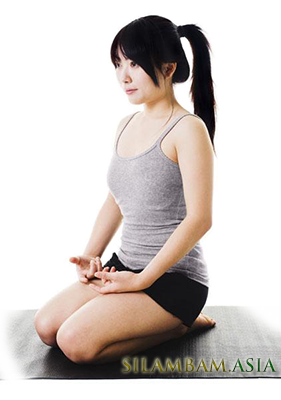
If you're an expectant mother then Prenatal yoga is probably for you. (Sorry, guys!) Some say that Prenatal is one of the best types of exercise for moms-to-be as there's a lot of core work and a focus on breathing. Yoga has been described as one of the best exercise possible. It does not only calm the body, it also calms the mind. This is the only way in which a pregnant woman can make sure that she is healthy. Being pregnant is not only about the body, it is also about the mental state the mother is in. With the help of yoga during pregnancy, the mother will definitely be able to put away a lot of pain and get a better mental health as well. Yoga postures carefully adapted for expectant mothers. Prenatal yoga is tailored to help women in all stages of pregnancy—even getting back in shape post-baby. "When you keep your muscles strong through your term, they will still have the strength and energy to return to normal," says Nicole DeAvilla, developer of the prenatal teacher training at The Expanding Light yoga center in California. Anyone opting for drug-free delivery. Pregnant women who want easier and speedier labors. "You'll have an easier time delivering because yoga can strengthen your pelvic floor muscles," DeAvilla says. "People think keeping things loose makes delivery easy, but stronger muscles stretch more easily to make things go faster."
Yoga and fitness
Yoga and pregnancy
The practice of yoga during pregnancy can bring about a lot of good thought and energy into one's body and mind. Through the help of yoga, pregnant women can stay healthy, focus and concentrate on all little things without any problems. Yoga for mother is something that has always been a little toned down, without any rigorous exercise for the mother. It is more of a calm and caring exercise regime that can help the mother stay slimmer during pregnancy. Safe exercise during pregnancy; speeding up labor and warding off pregnancy aches, pains, and swelling; plus, keeping the core strong to help maintain good posture counteracting the pull of the baby on the body.
Yoga and weight
One of the biggest problems when it comes to pregnancy is the fact that a person can put on a lot of weight during this period and they will not be able to lose it easily unless they are prepared. A mother who has been doing yoga exercises during pregnancy would definitely be able to maintain a better shape and a better, healthier weight than someone who had not been exercising a little during the pregnancy times. Yoga during pregnancy will ensure that the mother does move around and maintain a healthy lifestyle that would optimize and strengthen the mother's body to the maximum extent, so that they can have the baby without too much of a physical strain on the mom. Doing yoga exercises during pregnancy can also make sure that the mother's joints and muscles do not become too weak to handle the stress later on as well.
Calming effect
Yoga for mother is a really good concept because of its calming effect. It focuses on focusing and concentrating positive energy in one spot. It can remove all mental tension and issues running through the mother's head and make it more clear as well. Yoga for mother is certainly important because of all the spiritual and the mental knowledge they will certainly get.
Maintaining better health
Yoga during pregnancy can help reduce the symptoms of all those irritating aspects of pregnancy- including weight gain, morning sickness, constipation etc. In the end, doing yoga exercises during pregnancy can also make sure that the mother does not get hurt when she goes into labor and has a smooth delivery.
Teaching how to do yoga during pregnancy
When a woman is pregnant, she has to take care of her body and ensure that she does not do something that could be dangerous to her womb. In such a situation, there are certain steps to be followed for yoga after pregnancy and during pregnancy as well. During the first trimester of pregnancy, it is suggested that the yoga for mother exercises focus on the legs and reduce chances of the leg cramping up as well. During the second and third trimesters, the mothers should shift to the asanas. These yoga exercises during pregnancy can ward of overwork, fatigue and its effect on the muscles.
During all this time, when doing yoga, the mother has to focus on breathing right, for it will come in handy when she goes into labour as well. Yogic breathing is like an extension of Lamaze. Lamaze breath emphasizes the exhalation, which makes it easy to learn, and yogic breathing deeply engages your diaphragm, helping you relax more. Beware of balancing poses—your center of gravity is totally different with two of you. It is also suggested that women should stop doing yoga when they are near the 10th to 14th week of pregnancy since these are physically crucial times and it will not do for the mothers to push themselves like that. Even if they do, they can stress on the thighs and legs, but not the abdomen. After the 10- 11th week, resume yoga exercises after pregnancy.
Different yoga poses
Mother's yoga exercises after pregnancy and before provide for a smooth delivery and a fast recovery once the child is born. There is no need for the mother to remember all the asanas, but they need to focus on the values of yoga and just do the asanas and breathe the right way. Usually, the most common yoga for parents include shoulder lifts, neck exercises, yogic breathing, bhramari, vajrasana, cat pose, konasana, trikonasana, veerabhadrasana, paschimottan asana, butterfly pose, fish pose, viptritKarni, shavasana, nadi shodan, pranayama, yoga nidra etc. Meditation should also be an important part of the yoga for parents and for pregnant women.
When practicing yoga, make sure that you do not push it too hard. Yoga for parents and for mothers is important because of the fact that it makes an impact on the physical and mental nature of a person. It is still possible for a pregnant woman to push it too much, in which case, yoga might become bad. Before doing any form of yoga, it would be best for the pregnant woman to consult with her doctor, to find out if this would be good for her or not.
Yoga after pregnancy
Yoga is something that has to be continued even if the mother is not pregnant any more. Yoga for mother is important even after the delivery has happened, because the mother will still need a lot of physical and emotional strength. The mother might also have some amount of baby fat that needs to be shed. Doing yoga exercises after pregnancy can help in shedding the extra body weight gained by the person. Since yoga exercises after pregnancy include a lot of weight loss as goal, the intensity would be much higher as well. See supermodel mom Cindy Crawford and her post-babies body for results.
Yoga in Ayurveda
Yoga an integral part of Ayurveda treatment
Published: 22 November 2014
Last Updated: 15 May 2025 04:30 AM (GMT+8)
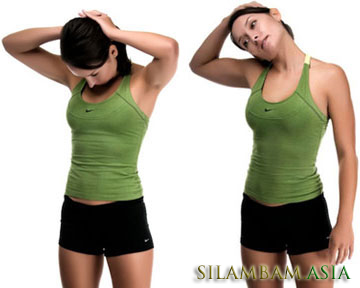
Ayurvedic with it's inter-related approaches to science and religion insists upon the process of detoxification as one of the curative modes. As a mode of treatment centering on cleaning and detoxification, Ayurvedic imbibes in itself the principles of science, philosophy, religion and essential facets of humanism.
With its origin in the Vedas, Ayurvedic also incorporates certain principles of yoga within its folds. With its main focus on physiological balance and cleansing, Ayurvedic which is one of the most ancient systems of healing; makes use of medication based on herbs and natural resources apart from bringing about suitable modifications to lifestyle and diet management. Besides these, Ayurvedic also includes yoga or union as one of its therapeutic tools. Yoga which makes for the union of mind, body and soul, is another naturopathic healing tool. Paving way for the best possible integration of mental, physical and spiritual forces of energy ,yoga includes in its scope certain postures or 'asanas'; breathing exercises or 'pranayama'; and meditation which is supposed to be giving way to perfect bliss.
Both Ayurvedic and 'yoga' are similarly geared to the prospect of healing and preventing the occurrence of disease by striking in the human system a perfect balance amongst its three fold natural elements of fire, phlegm and air. Since time immemorial, with their inception during the Vedic Age, the twin concepts of Ayurveda and yoga have been going hand in hand. To focus particularly on yoga, its multifarious benefits apart from therapeutic healing include mental and physical rejuvenation, increased focus on things, prolonged existence and mental calm. Yogic postures linked with Ayurvedic healing are numerously manifold in terms of their technical modes and therapeutic use.
Rajayoga is looked upon as the ultimate form of yoga with its focus on meditation. Other yogic forms include 'Ashtanga Yoga', 'Iyengar Yoga', and 'Shivnanda Yoga'. Pranayam and asanas seeking to infuse an overall feeling of betterment are also included in various Ayurvedic retreats built across the world so as to serve the multifarious needs of the afflicted.
The exercise regimen including breathing techniques and postural stances usually vary keeping in mind the patient's malady or defect. The health care retreats striving to create a right balance between exercise and other naturopathic healing methods are usually guided by the expertise of Ayurvedic practitioners who recommend case specific use of yogic posture. The concerned patient's constitution and nature of malady are properly diagnosed before the recommendation of case specific line of treatment. The patients afflicted with defects in 'vata' are generally subject to slow paced movements; whereas those with defects in 'pitta' are advised movements of the moderate type. The ones afflicted with 'kapha' are advised to go in for rapid movements while undergoing the course of yogic meditation. The postures usually begin and end with the salutation of sun.
The combination of Ayurvedic medications and lifestyle management in addition to the effective use of various 'asanasa', breathing techniques and meditations have worked wonders on patients afflicted with joint pains down to those suffering from certain serious conditions such as malignancy, diabetes, increased cholesterol and major forms of cardio vascular ailments. The beneficial combination provided to the patients being subject to the alternative mode of rehabilitation has also emerged as an effective therapeutic option for those suffering from psychiatric stress and anxiety. Even the cases of reproductive ailment and cases of male and female infertility have been effectively addressed by way of the similar therapy. Various symptoms of dermatological disorders and cases pertaining to the enhancement of beauty have also come under the protective folds of yoga and Ayurvedic.
It is always preferable that patients opting for the therapeutic benefits of the mentioned amalgam should ideally seek refuge in health care spas and retreats built specifically to integrate Ayurvedic and yoga.
Silambam Asia (SILA) is in official partnership with the United Nations Sustainable Development Goals (UN-SDGS) to preserve and safeguard the Indian traditional arts, sports, cultural, and educational content of Silambam at the international level.
Silambam Asia plays active roles as an international organization for governance and sustainable development in the Indian traditional arts and sports for education, health, fitness, culture, nature, climate change, recreation, and dissemination of all these related information. Thus, it is vital to provide expertise for members by providing training, research, revive, rejuvenate, retain, and restore.
The mission of Silambam Asia is to provide effective international governance by constantly improving technical rules and regulating Silambam competitions or participation in international events or sporting arenas to be recognized as an Olympic and Paralympic sport in the near future.
Silambam Asia - Introduction
Indian traditional arts and sports for education, health, fitness, culture, nature, climate change, recreation, and dissemination.
Video content with development work, achievements and silambam history.
We Support


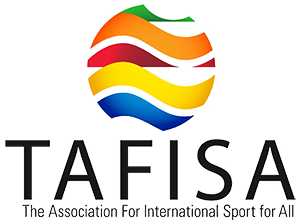


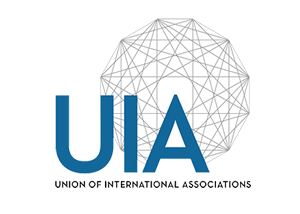
Make A Difference
We always encourage everyone to join us. Get in touch with us for more support.
